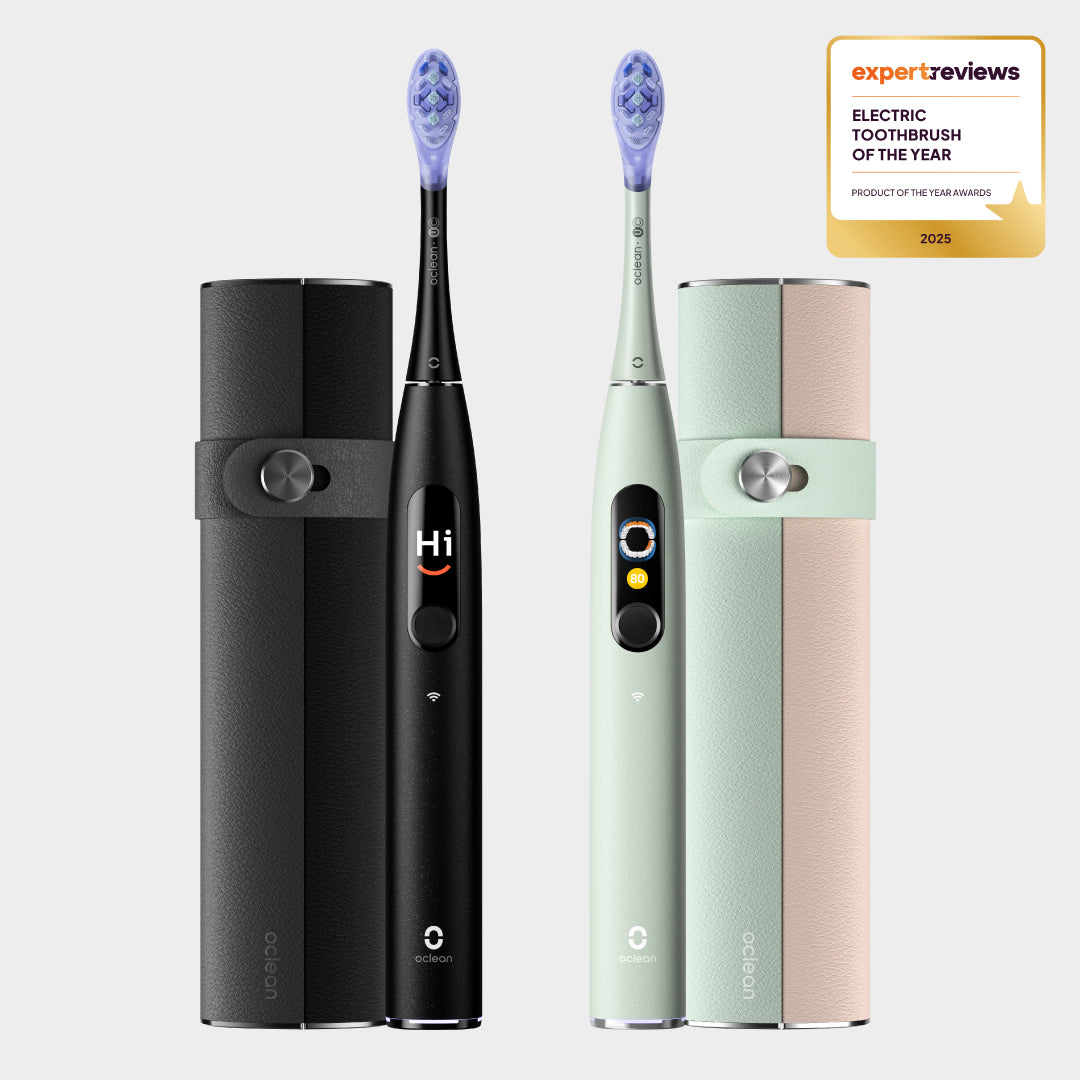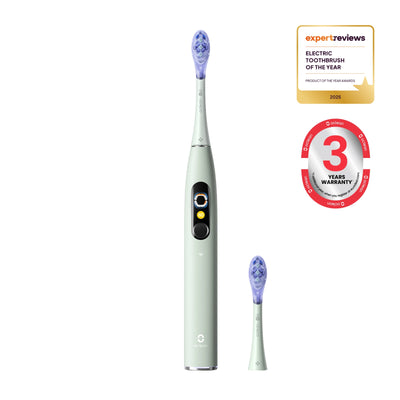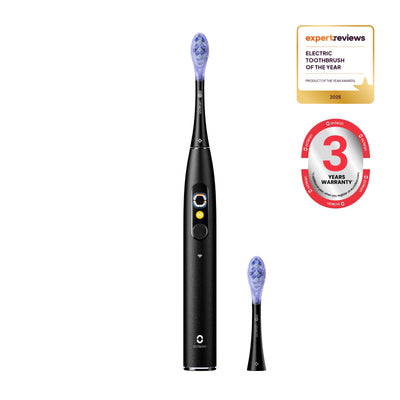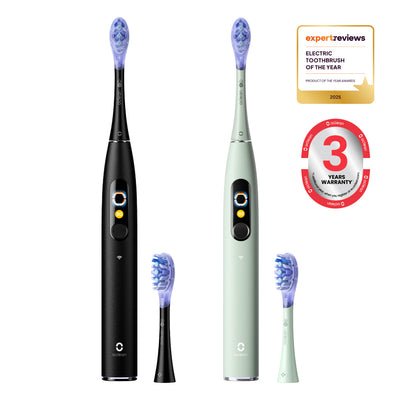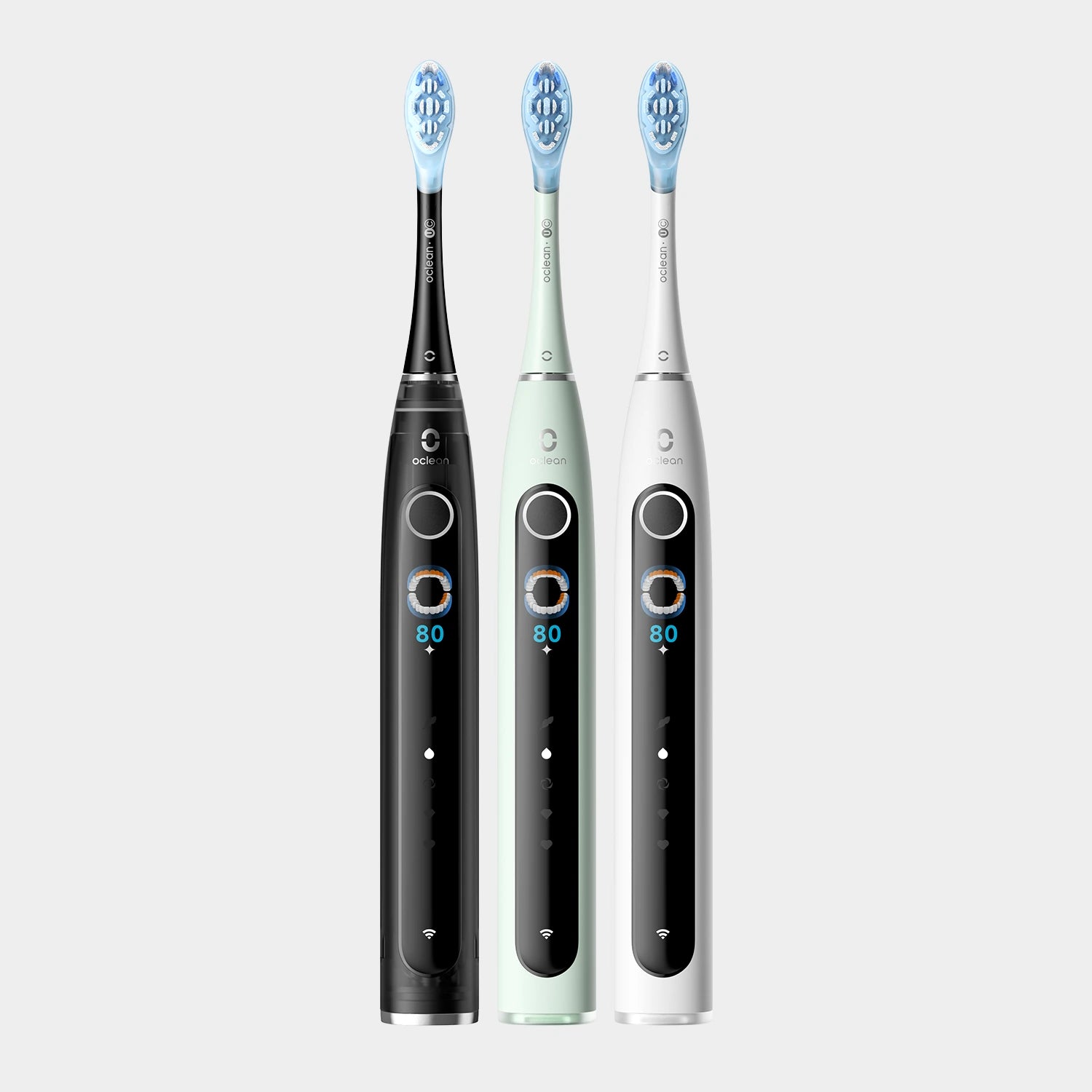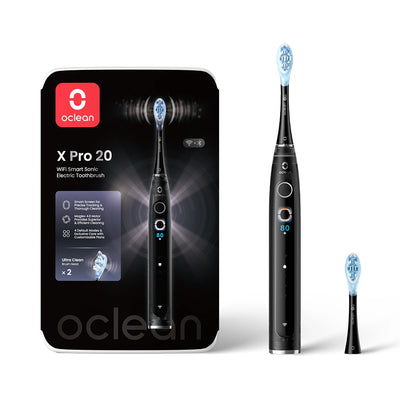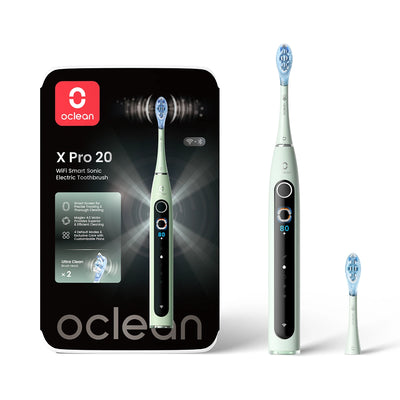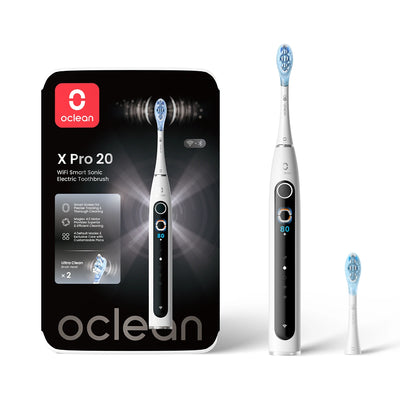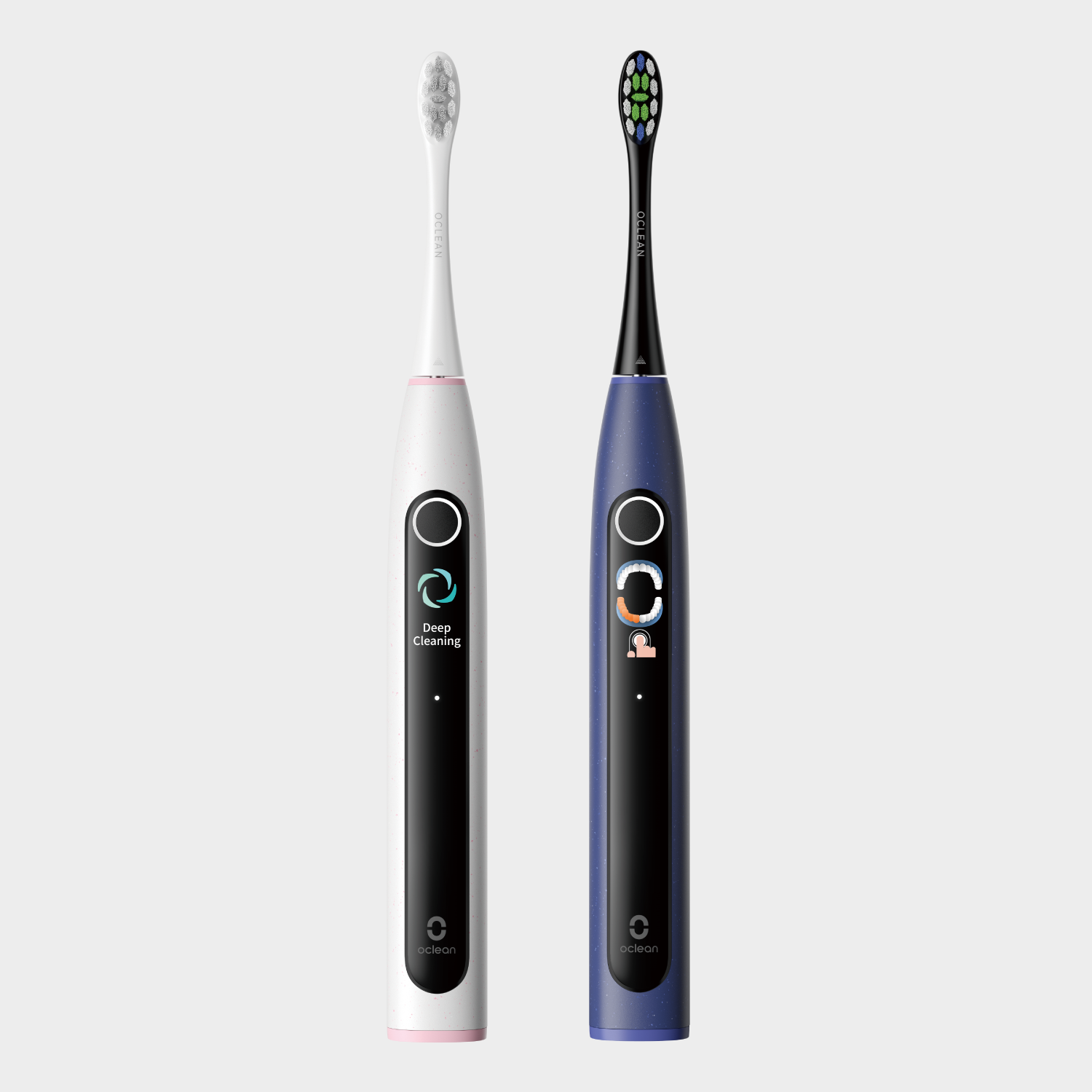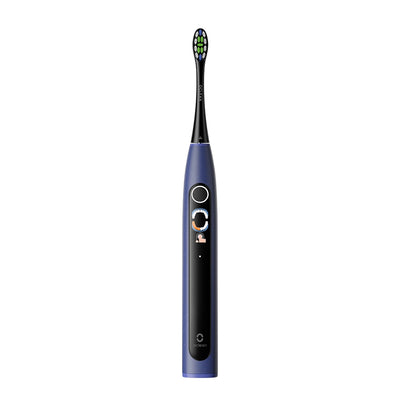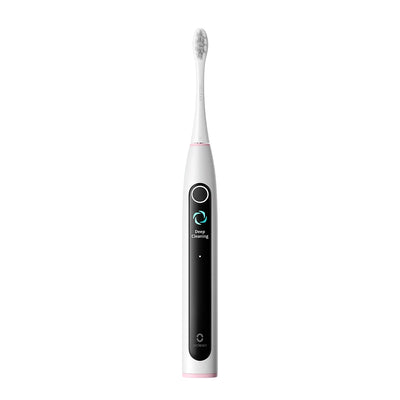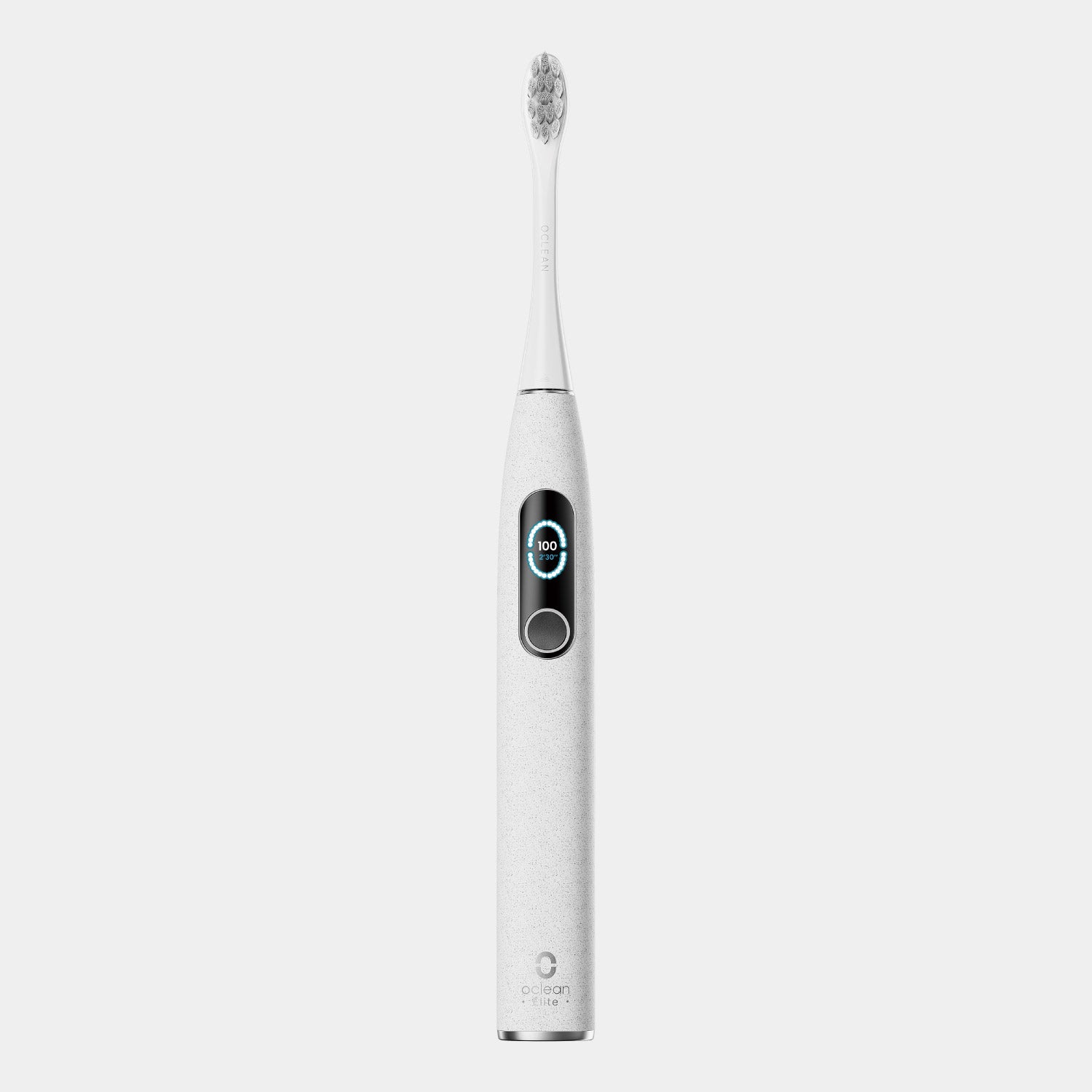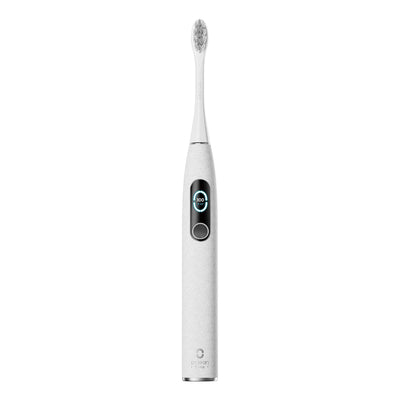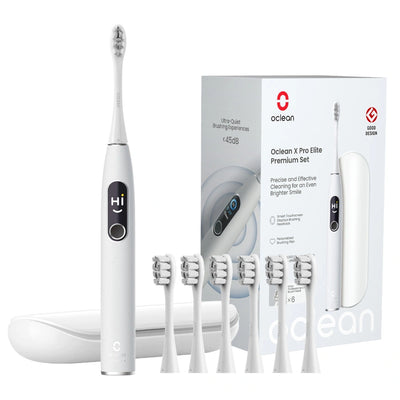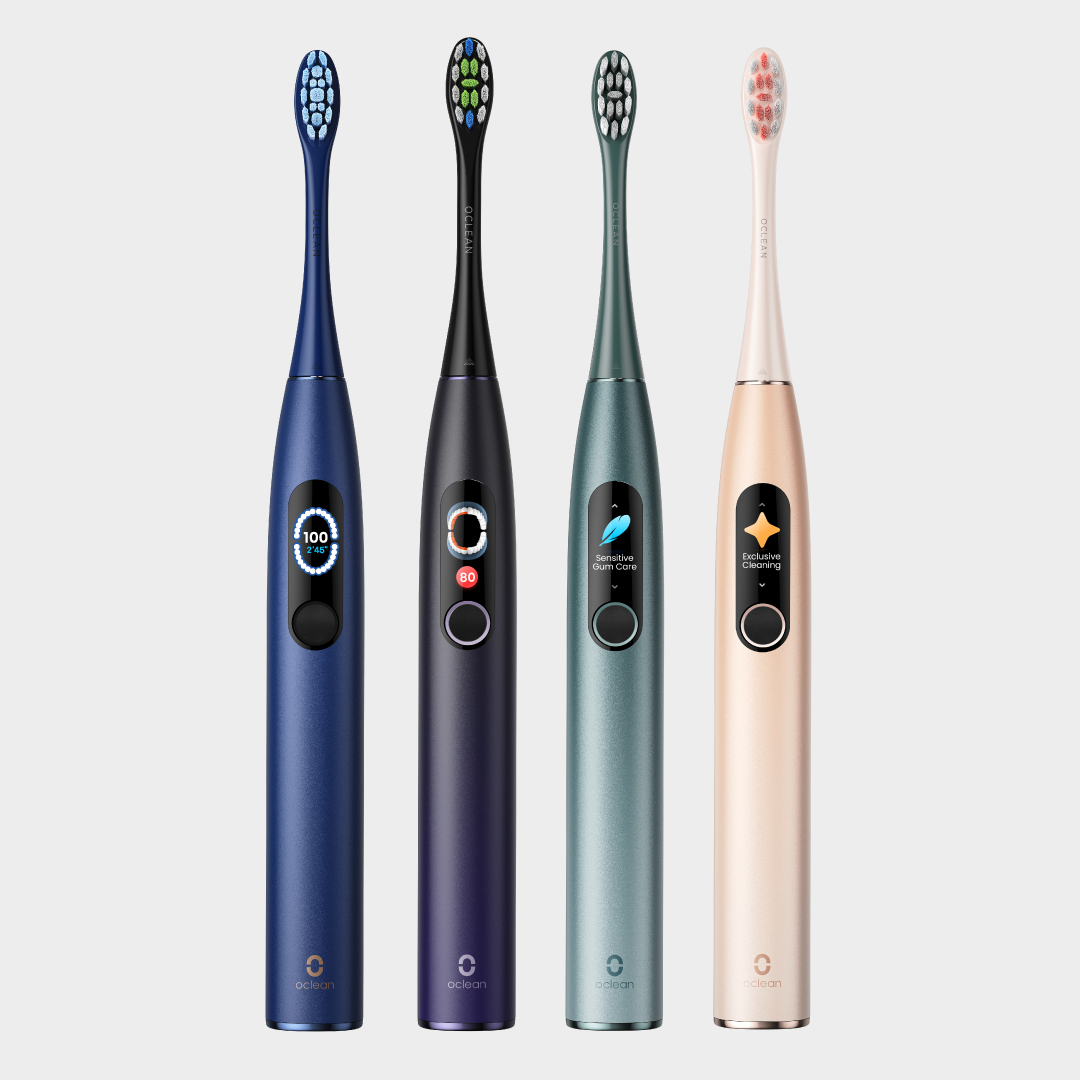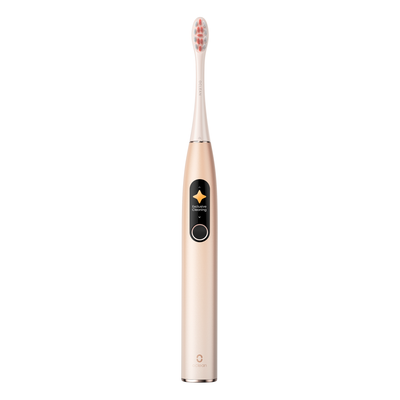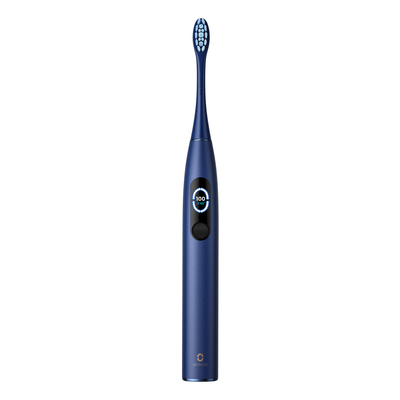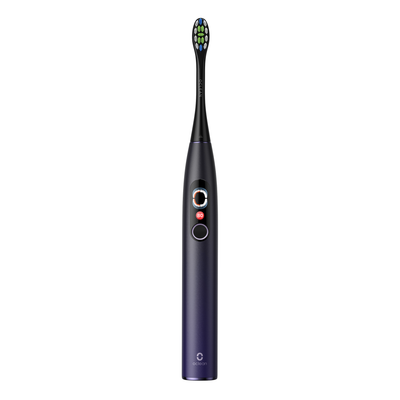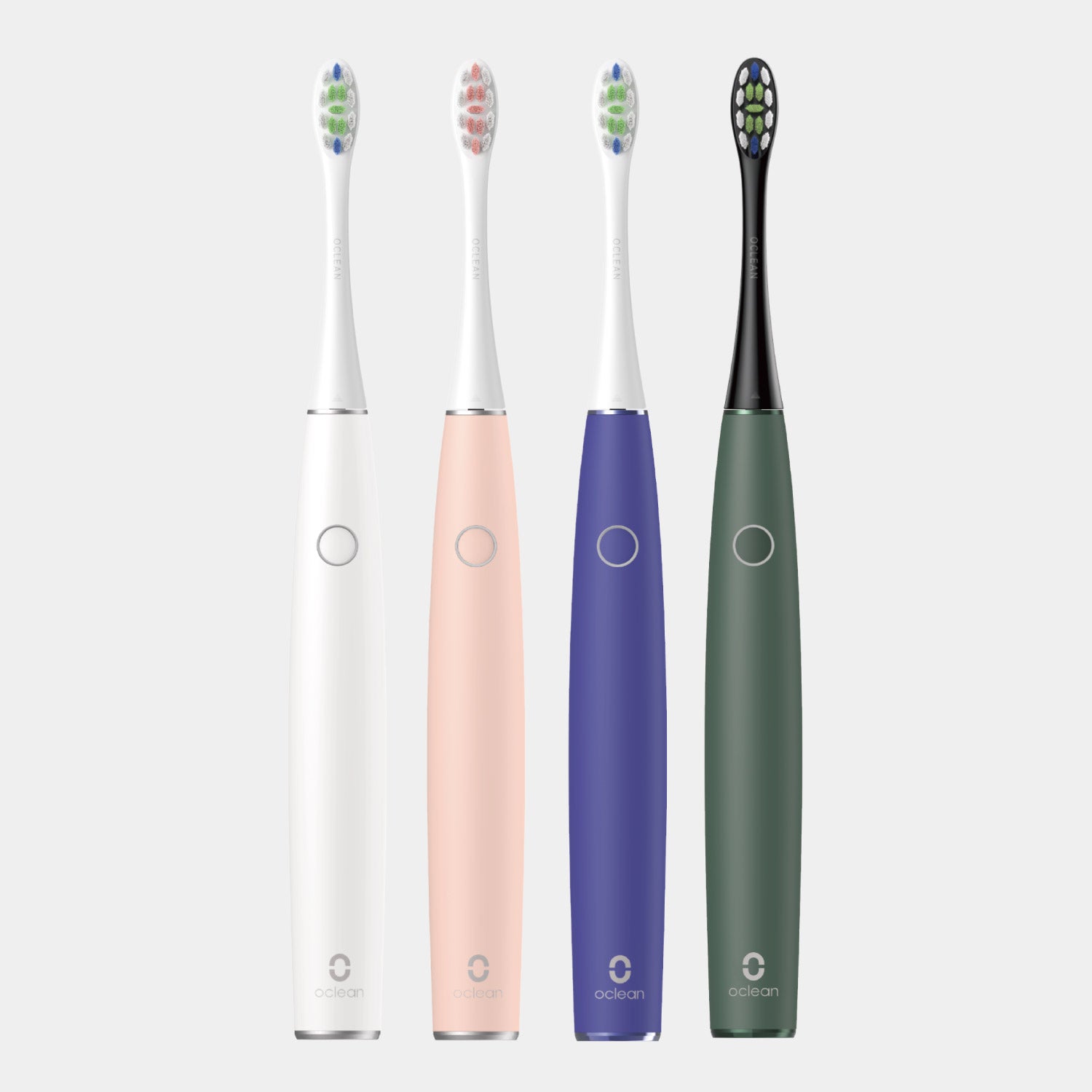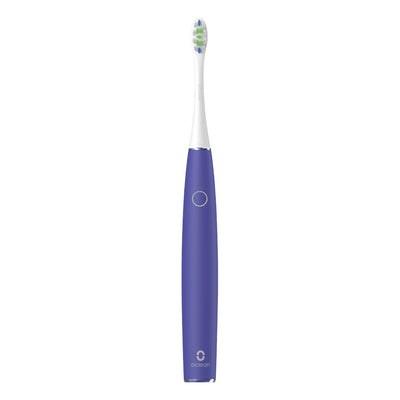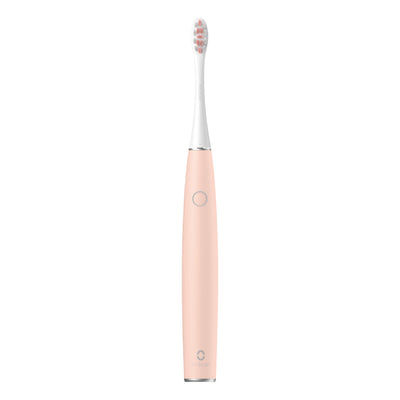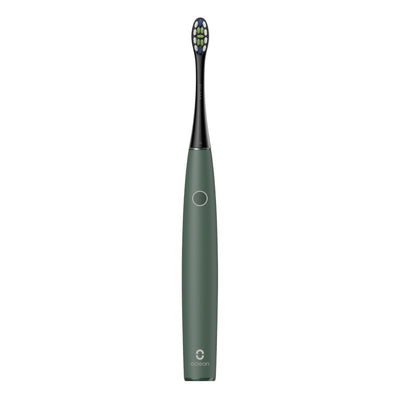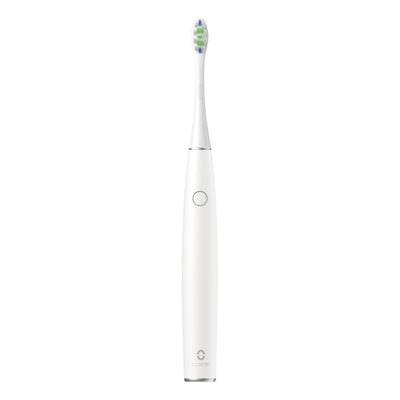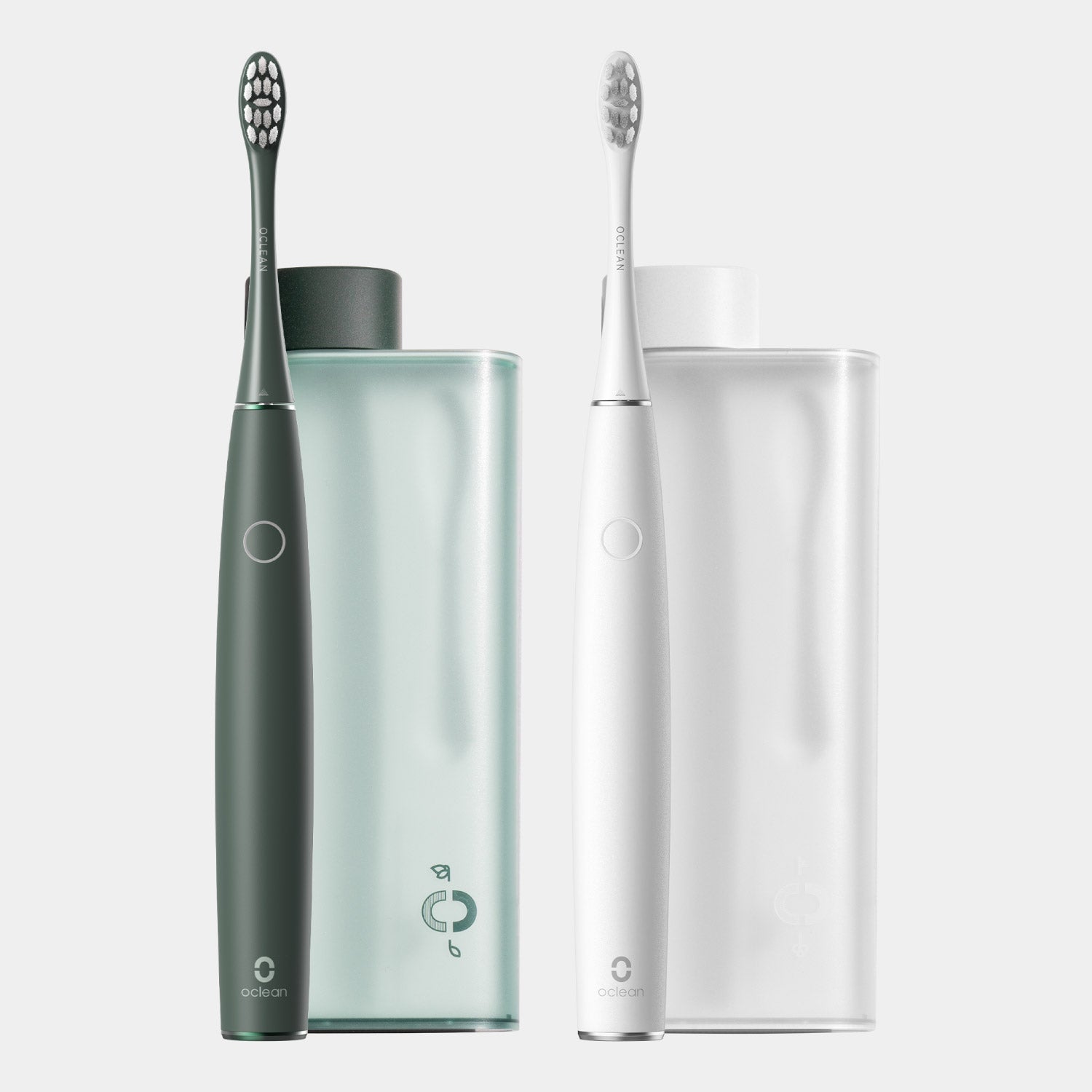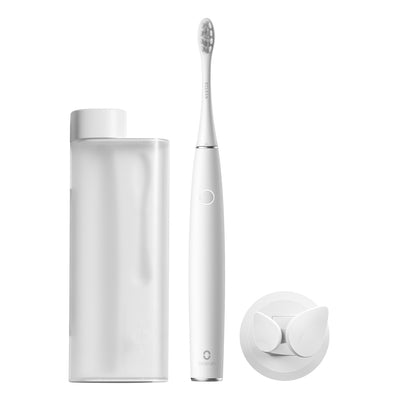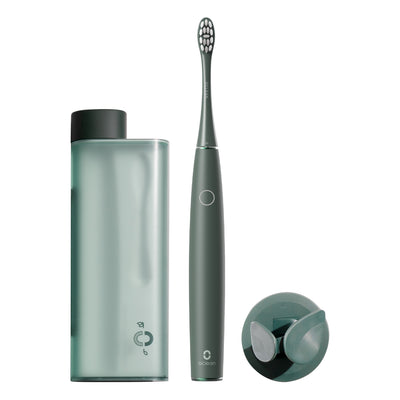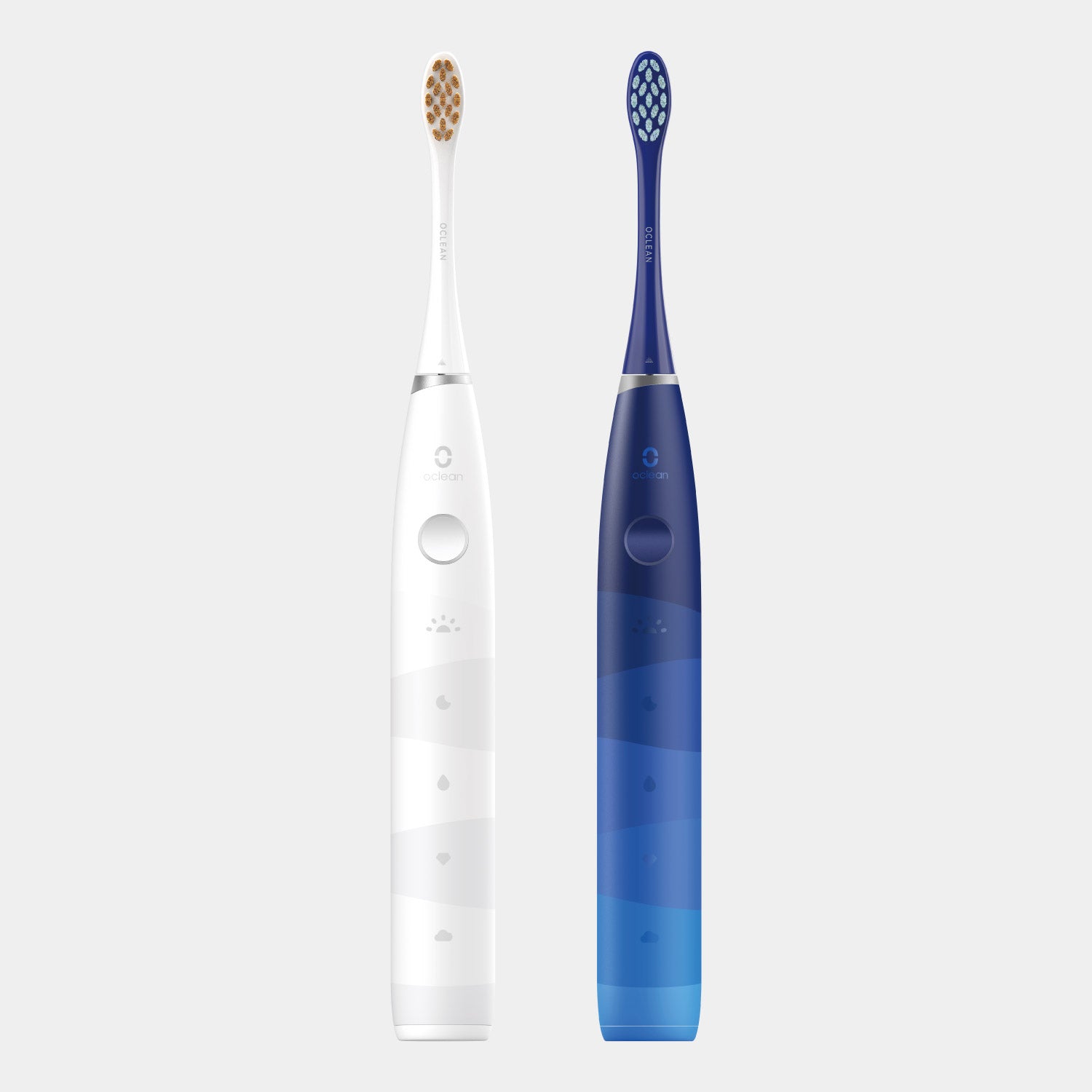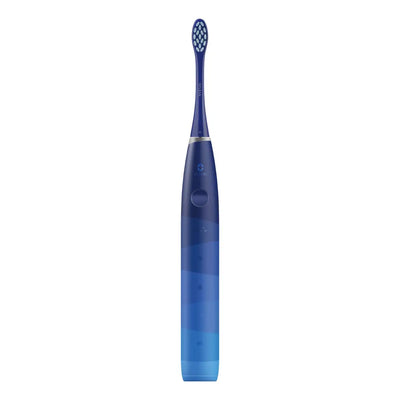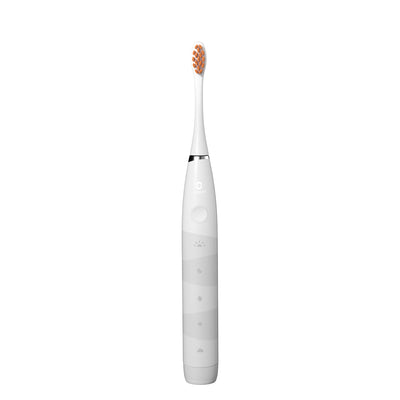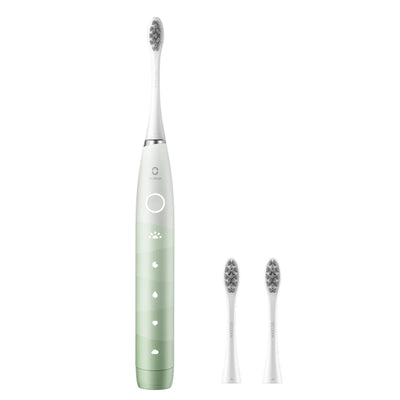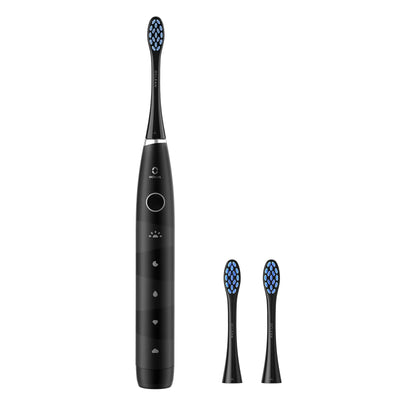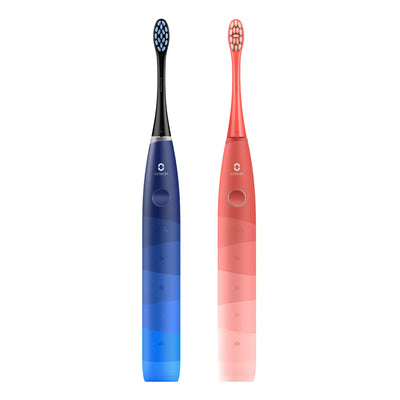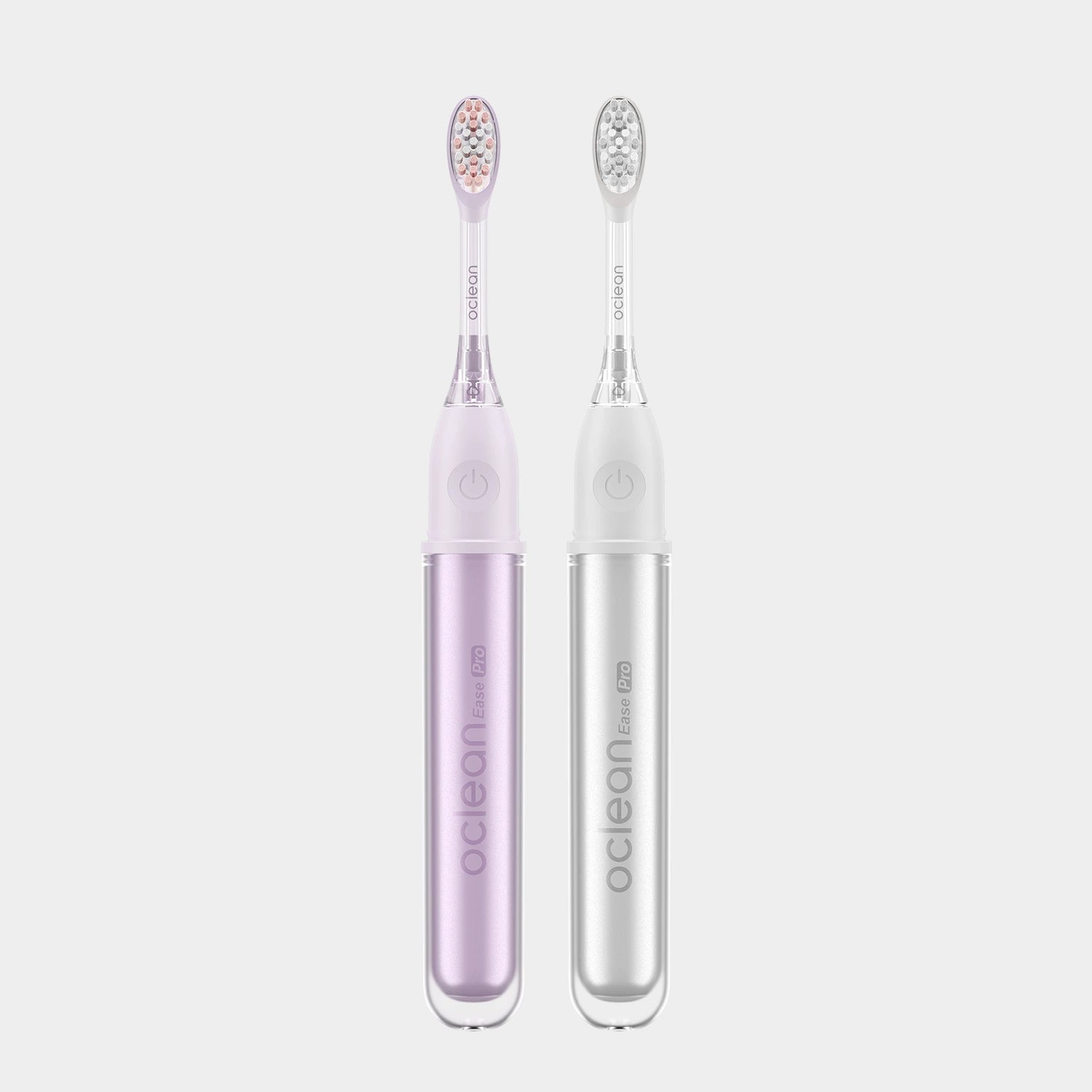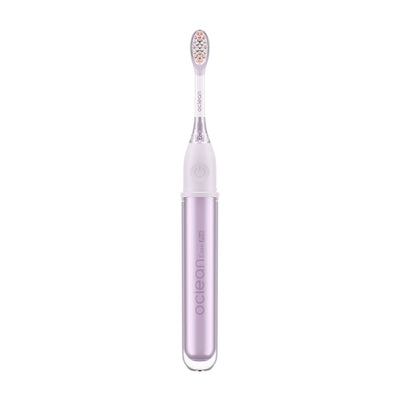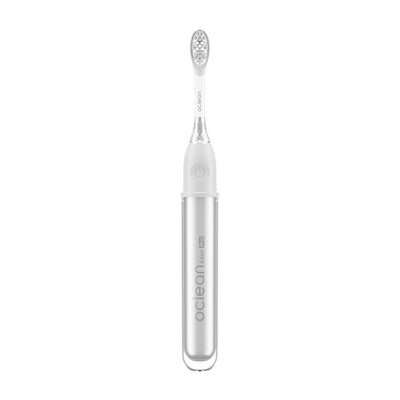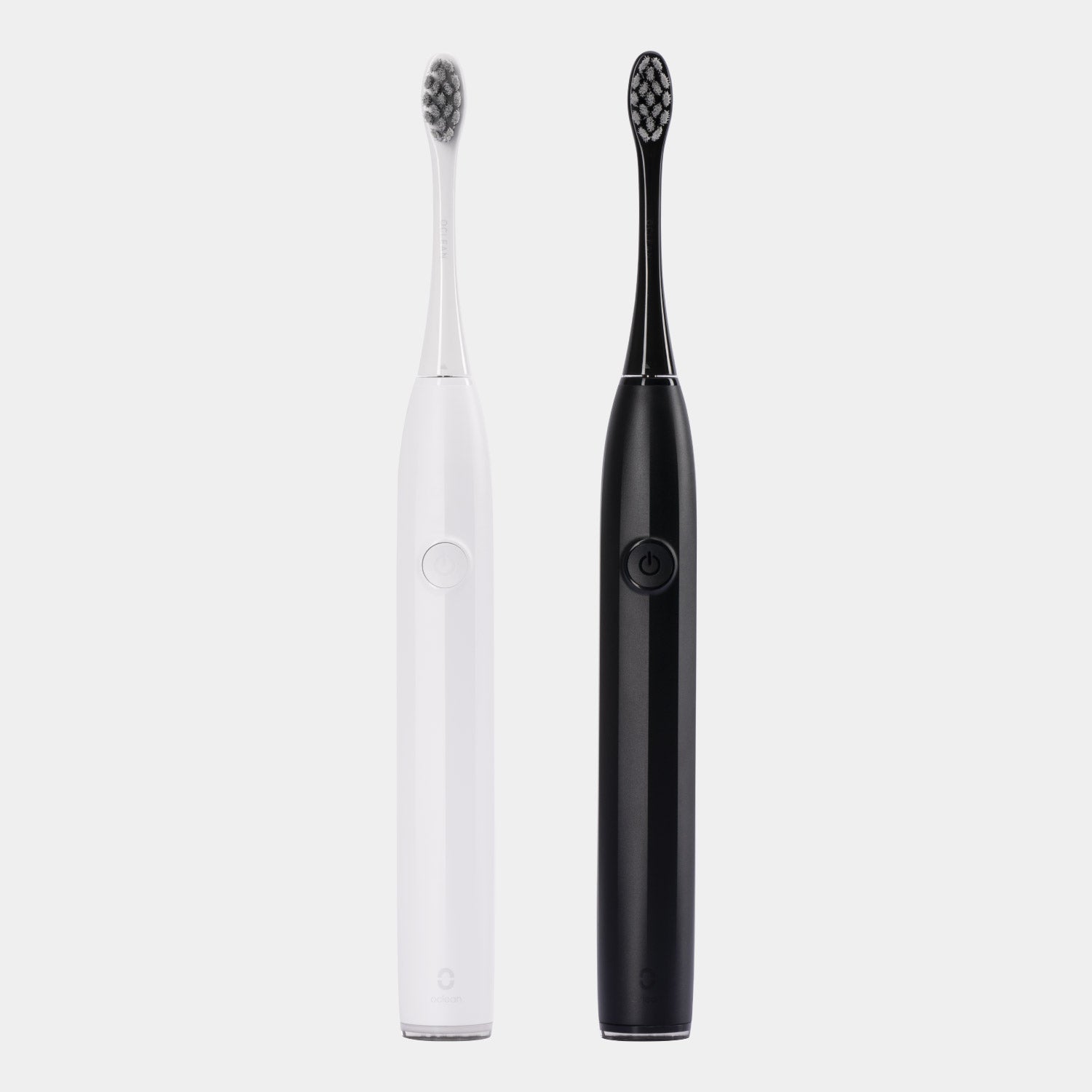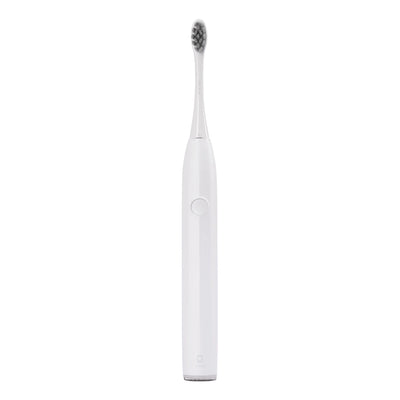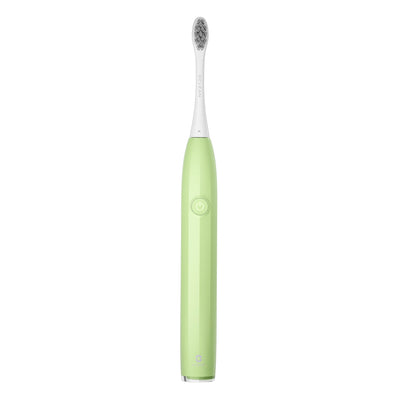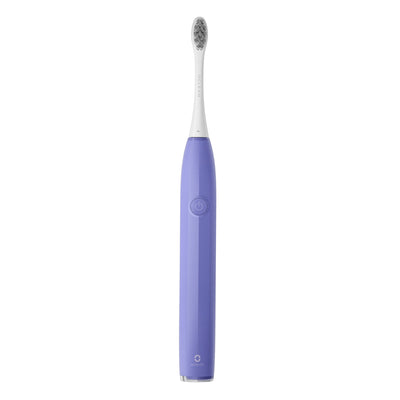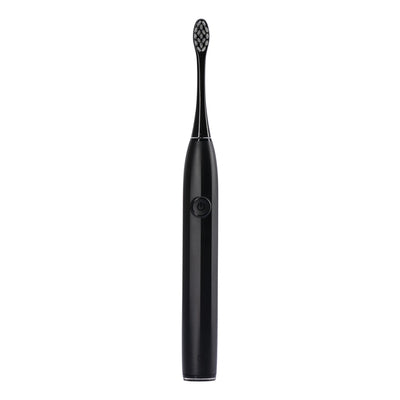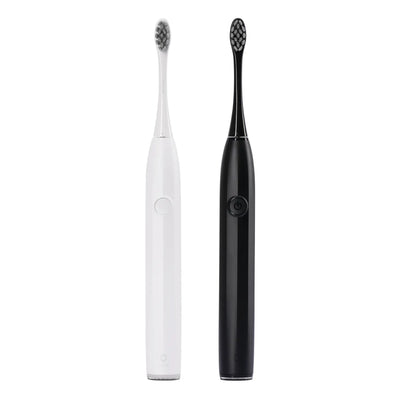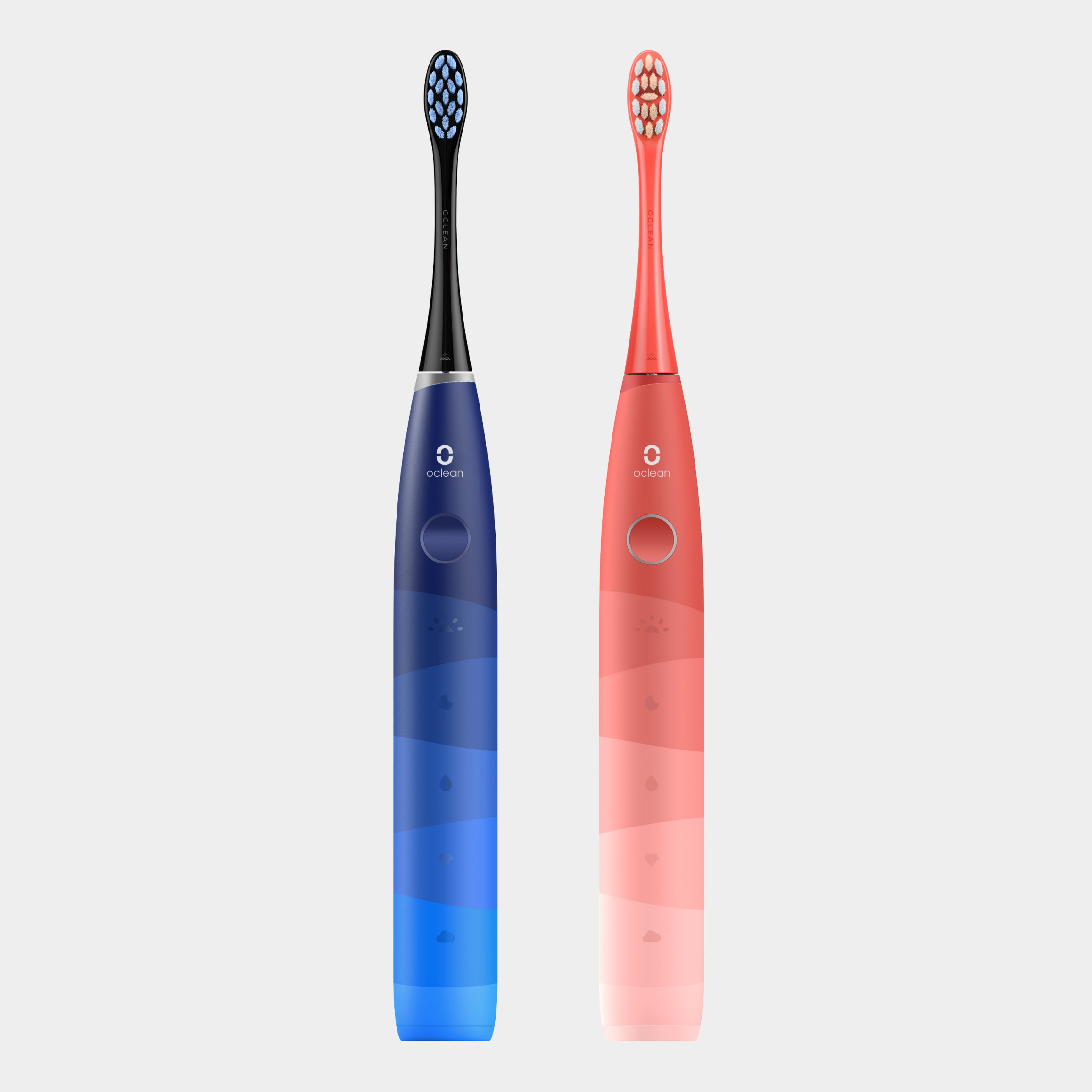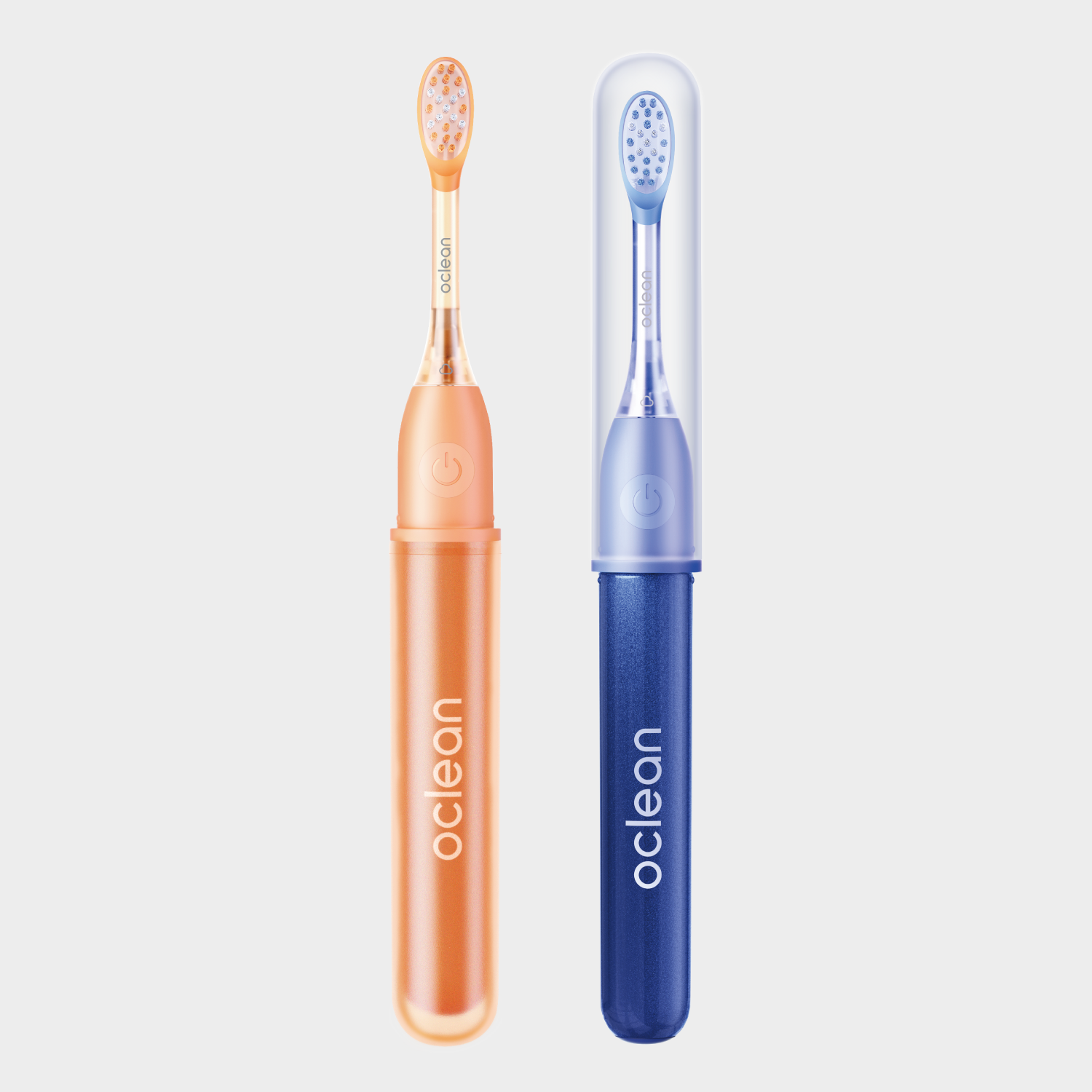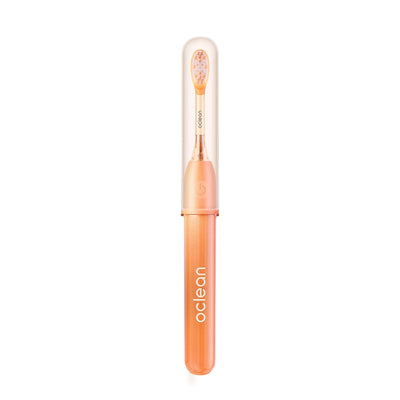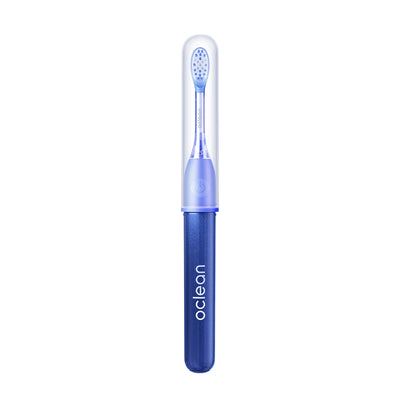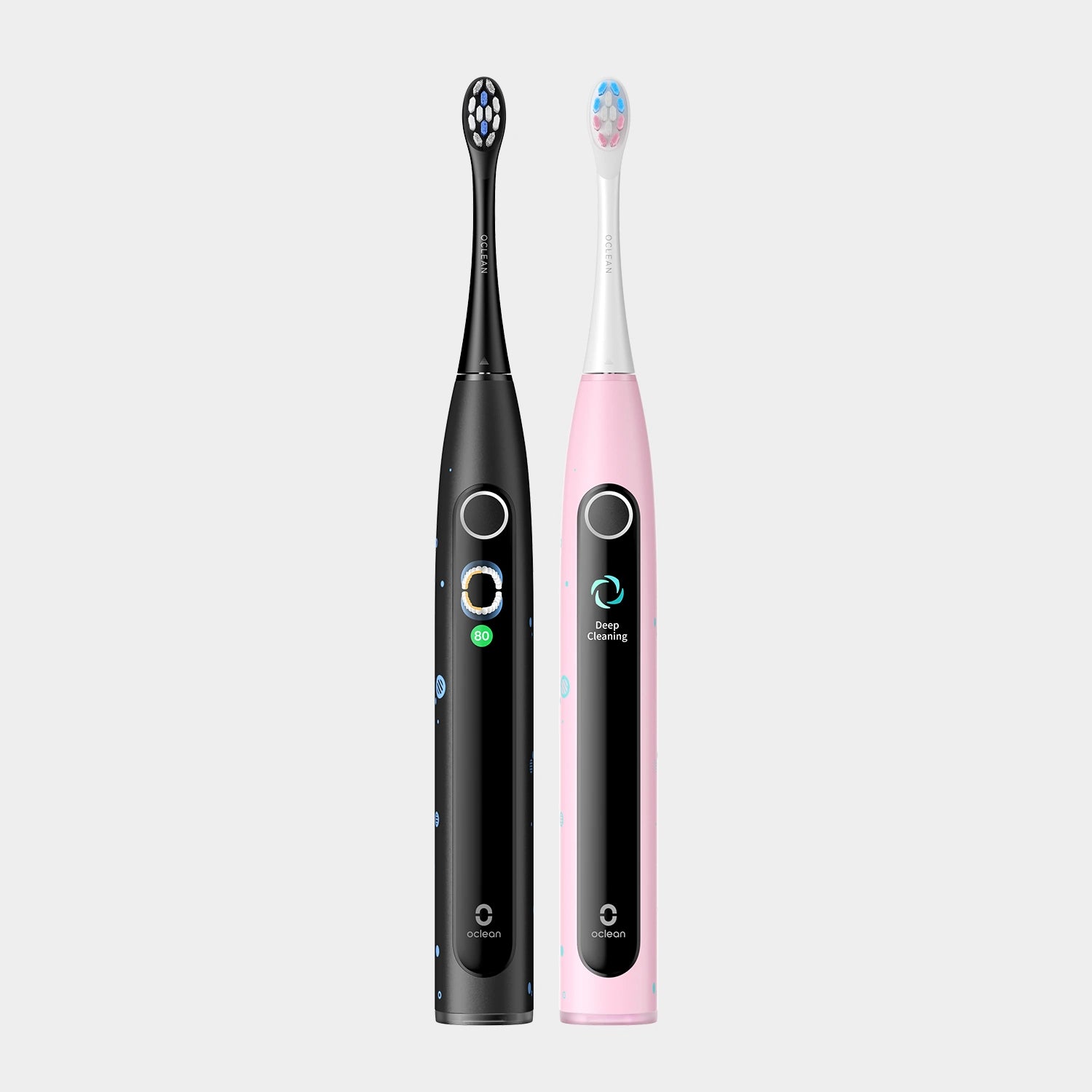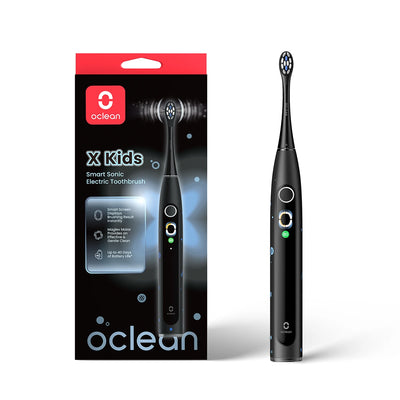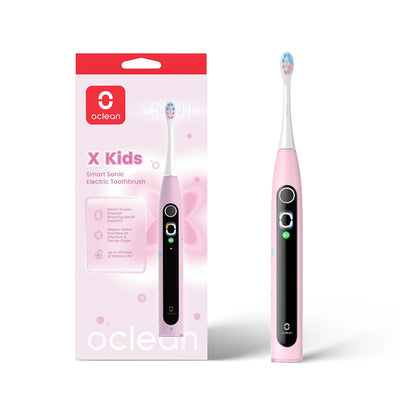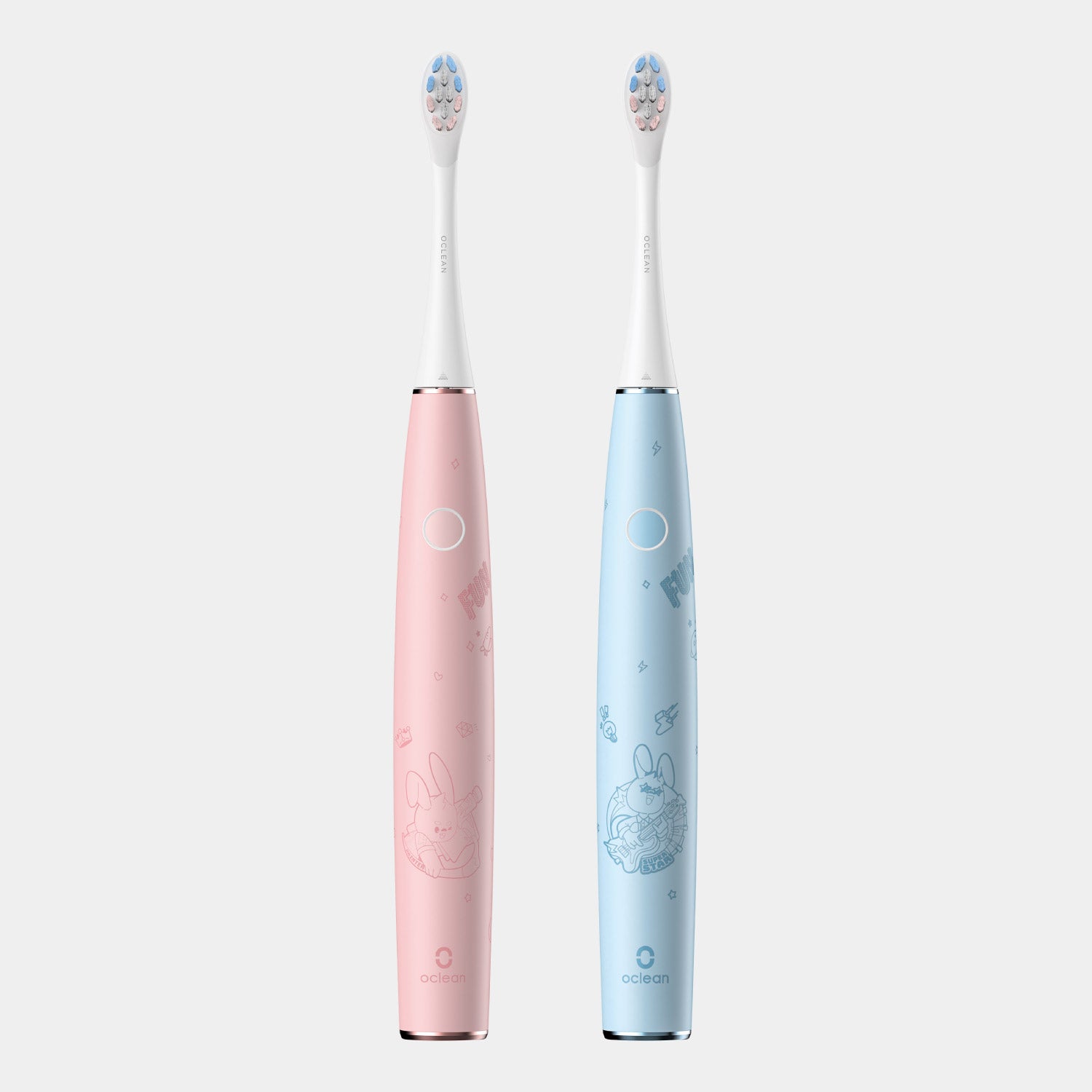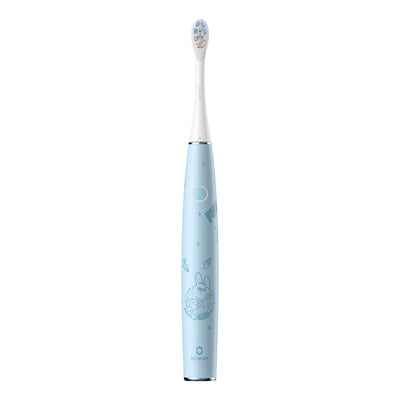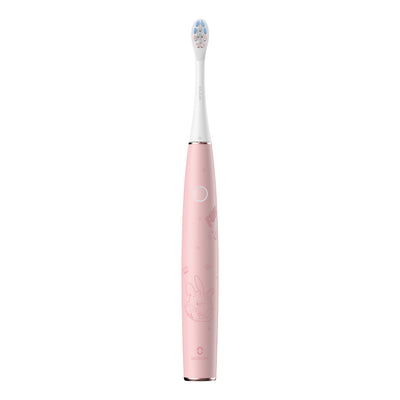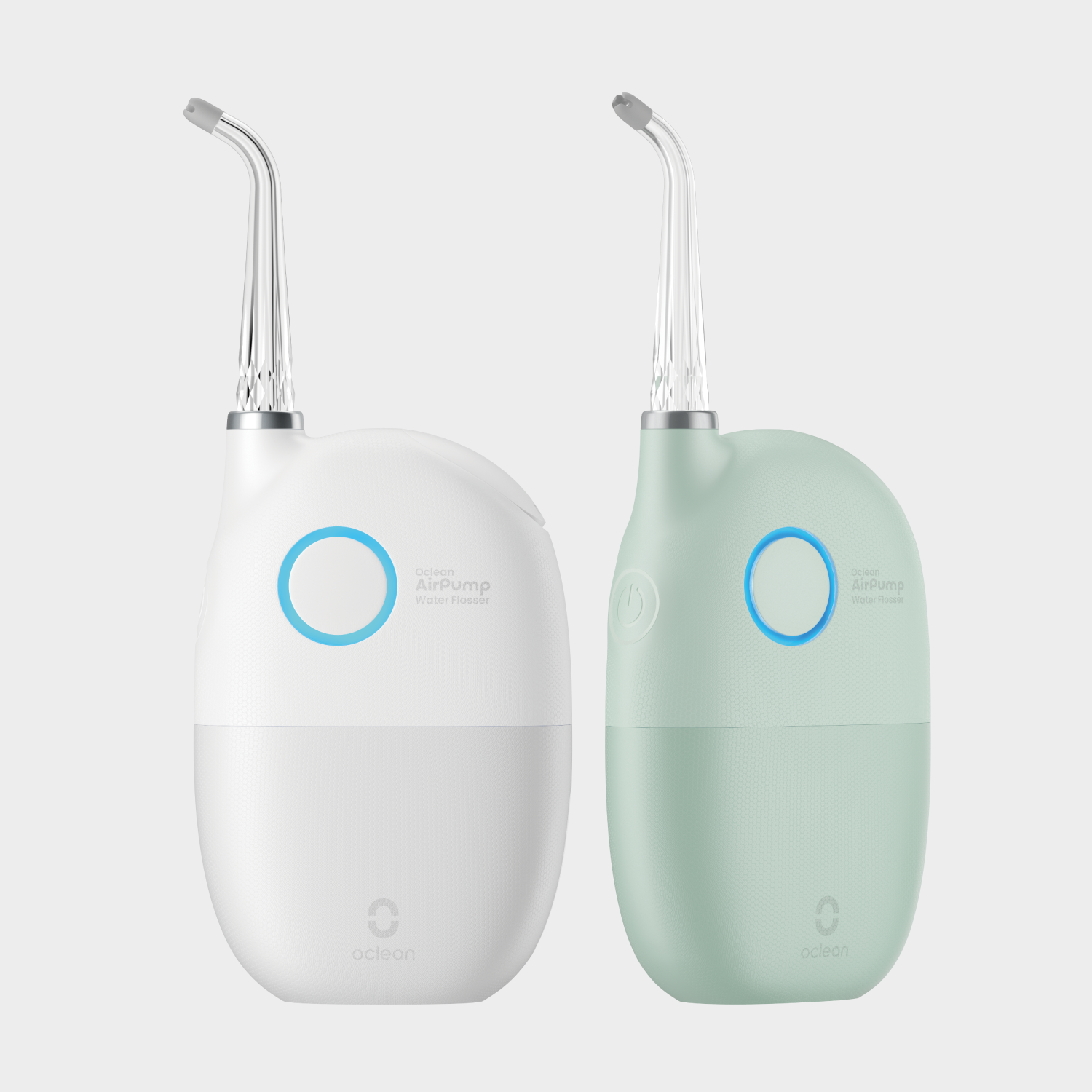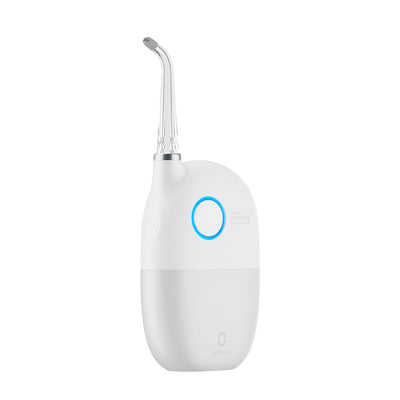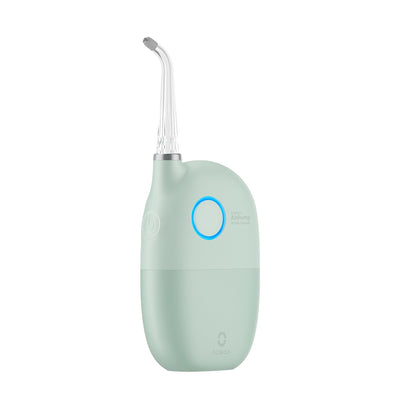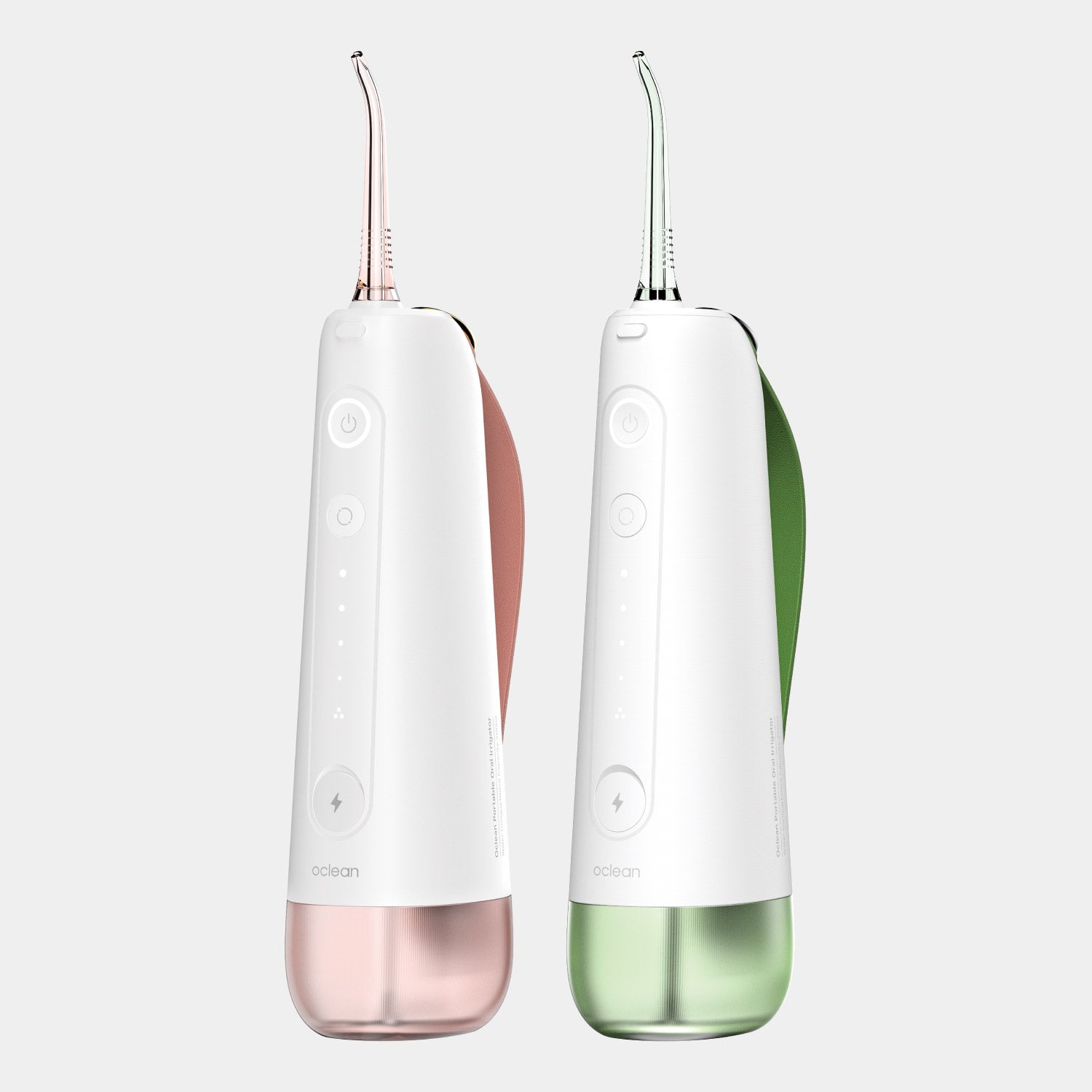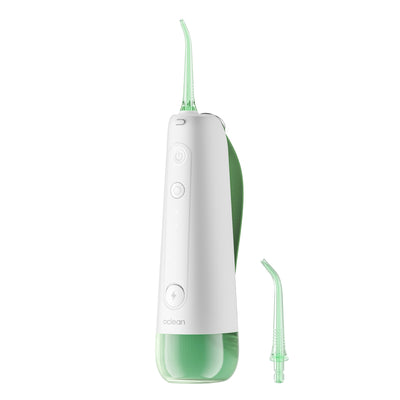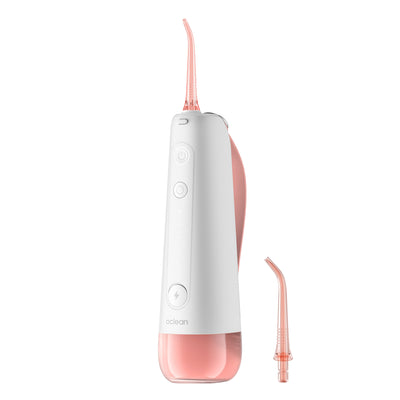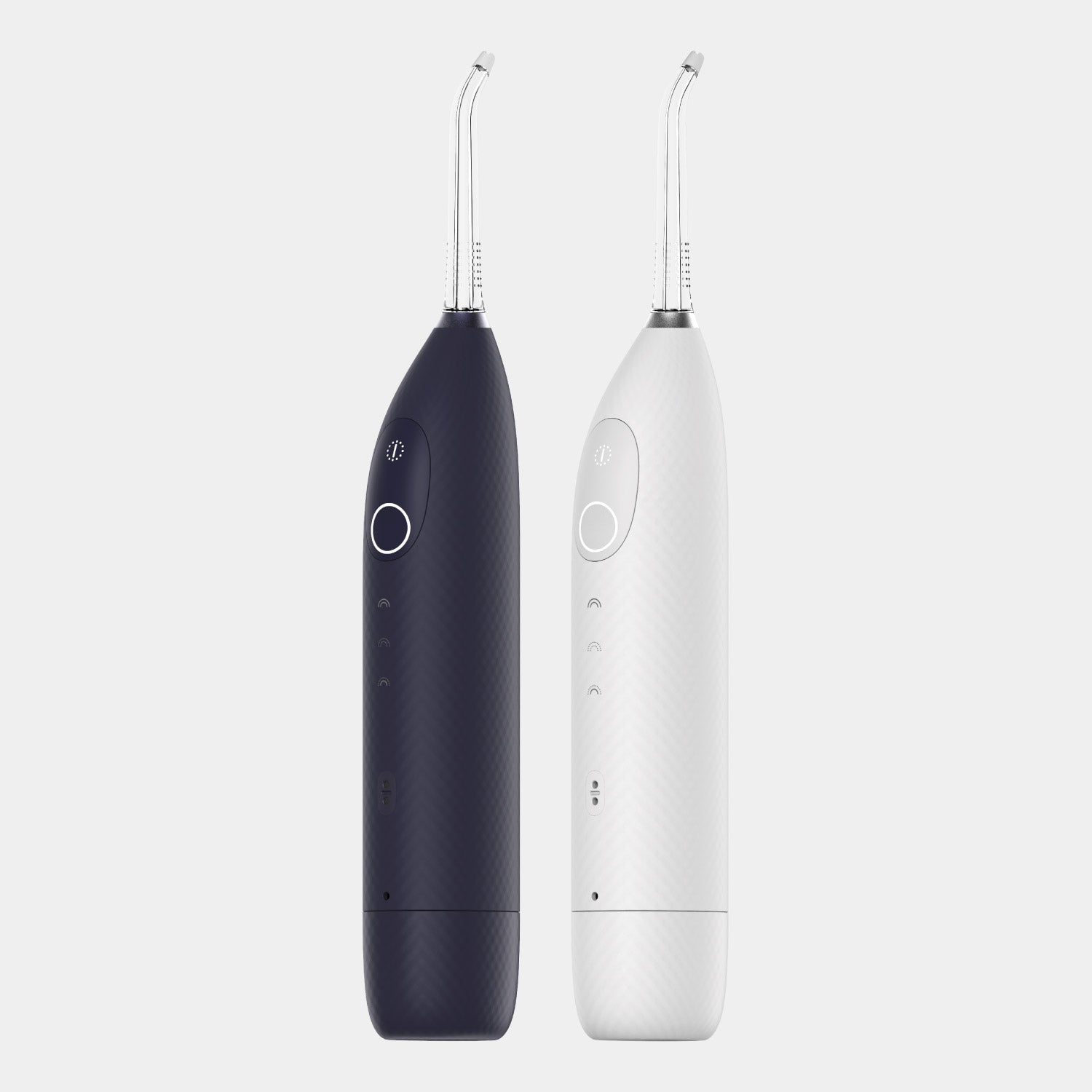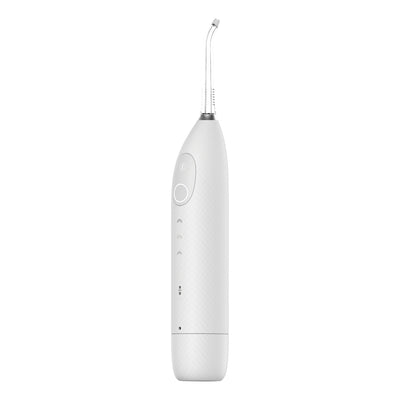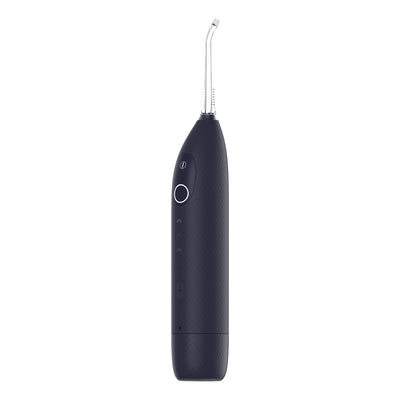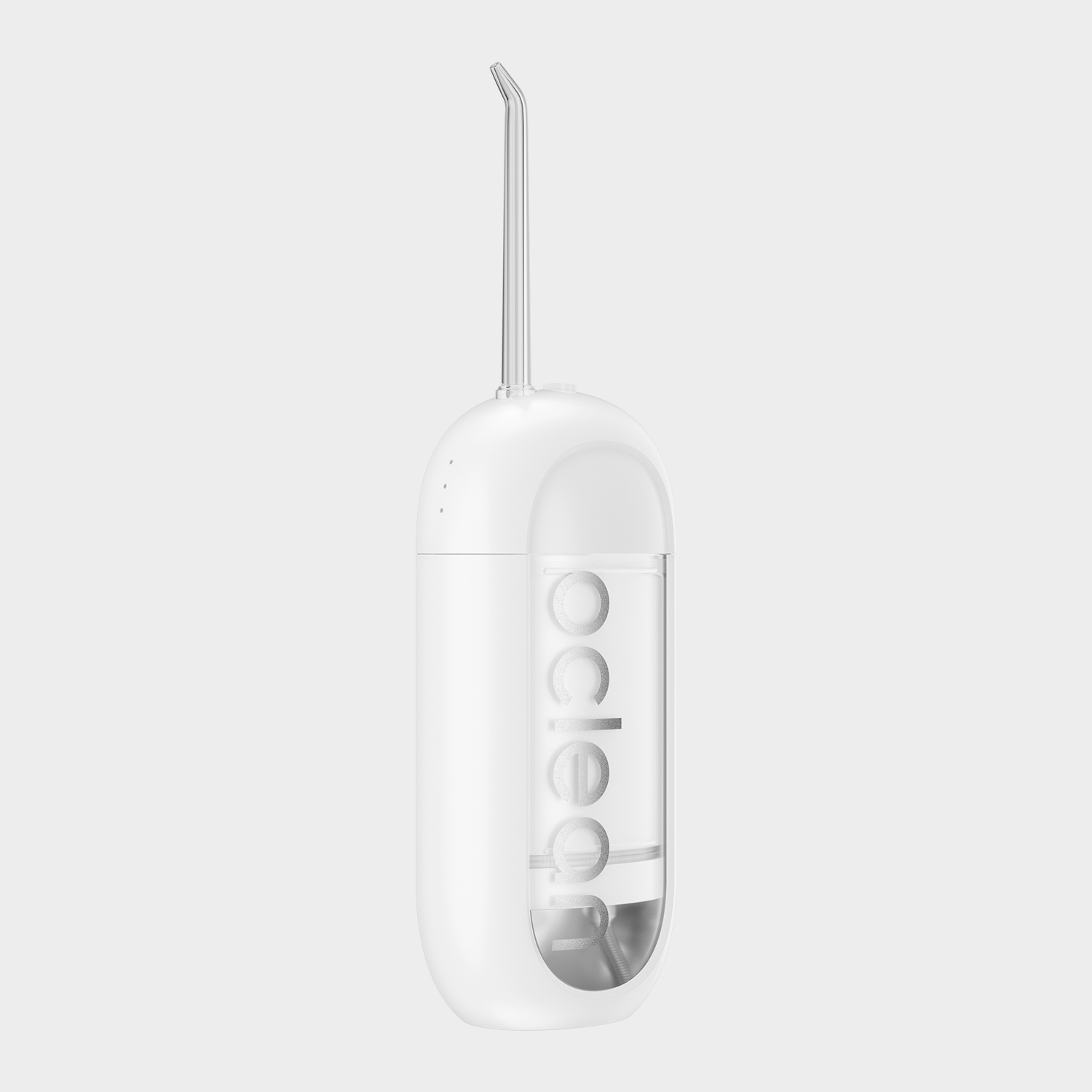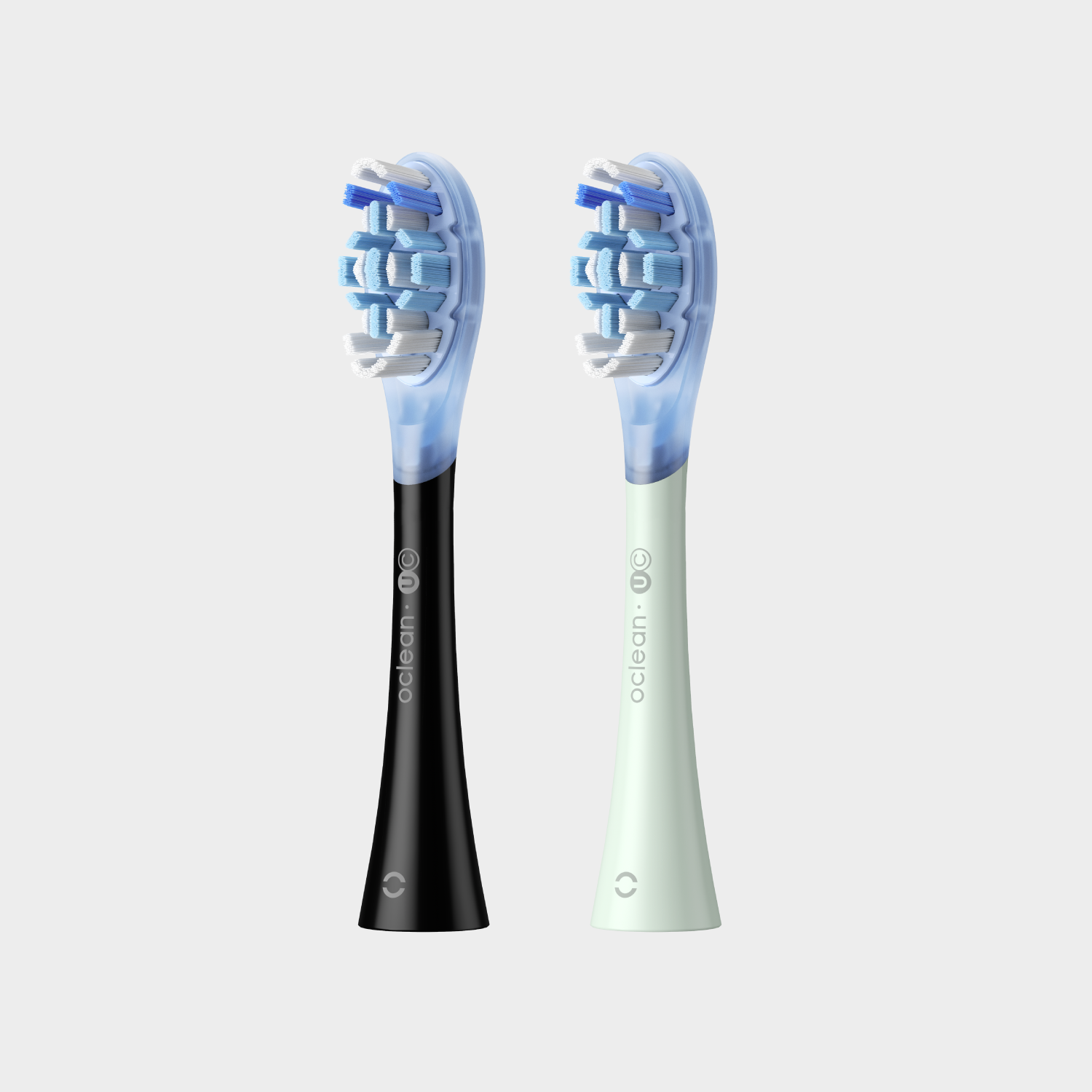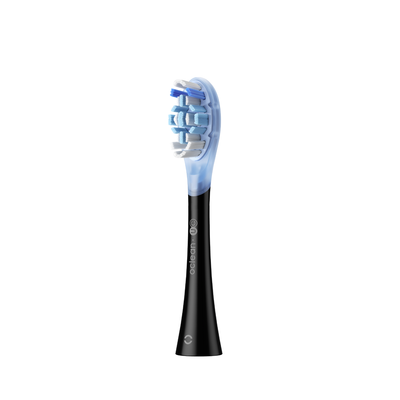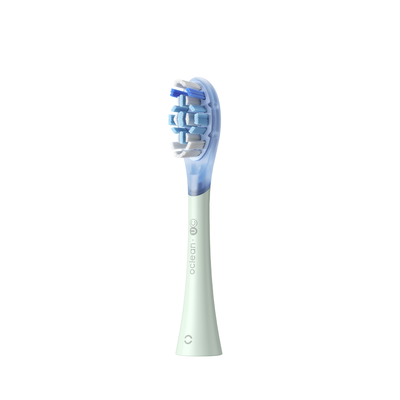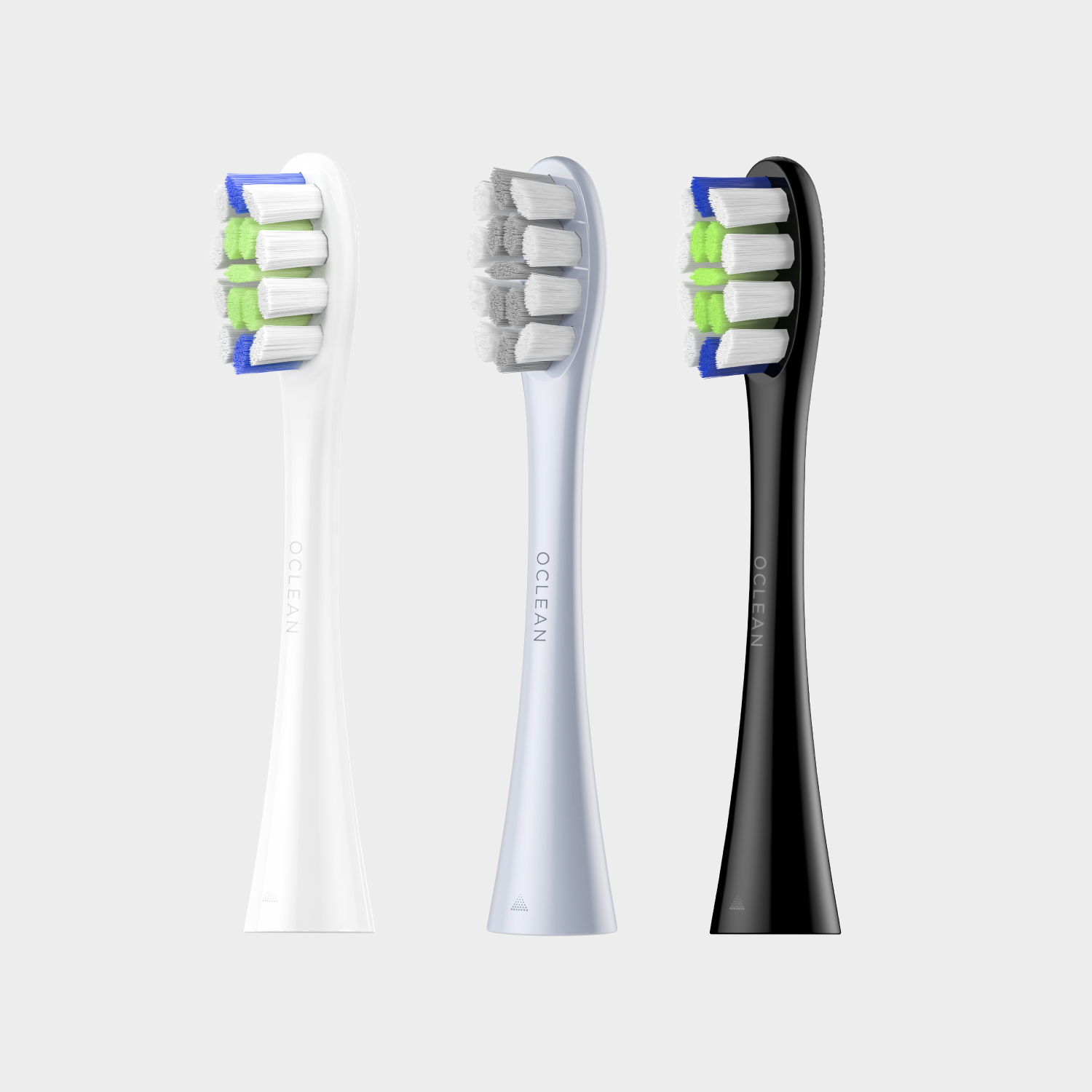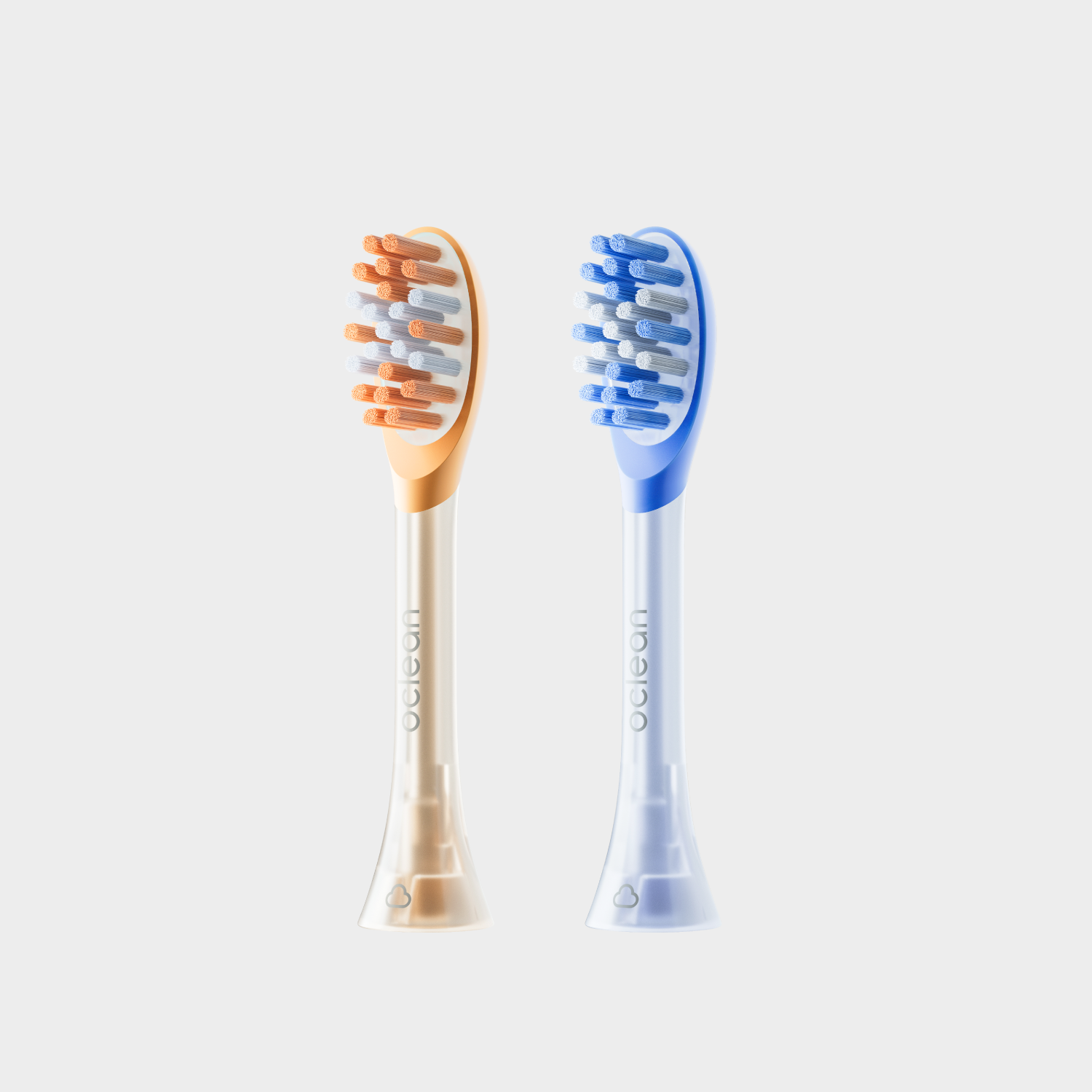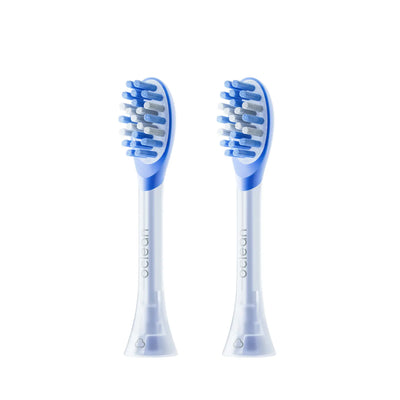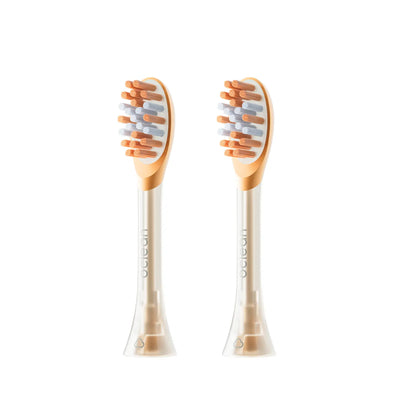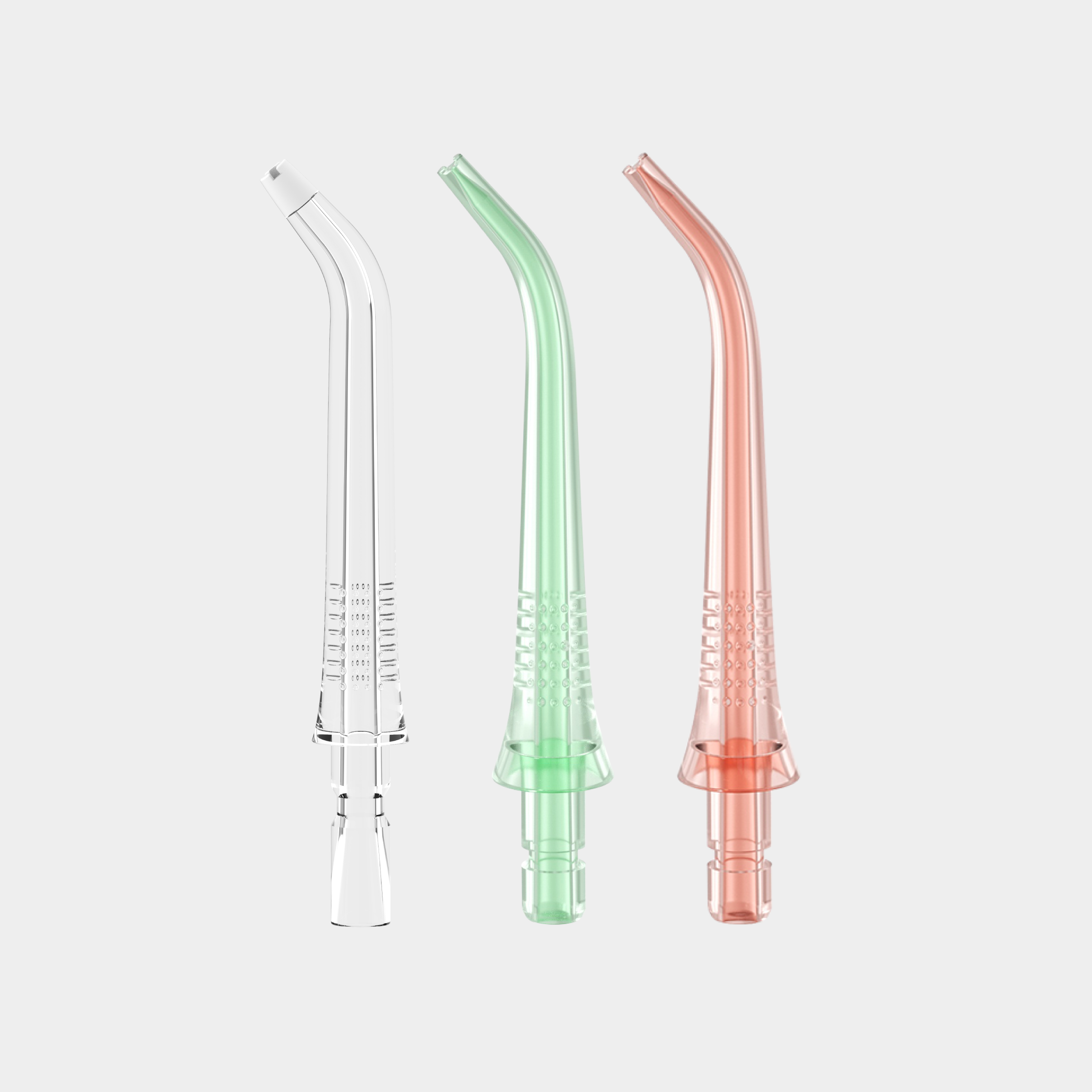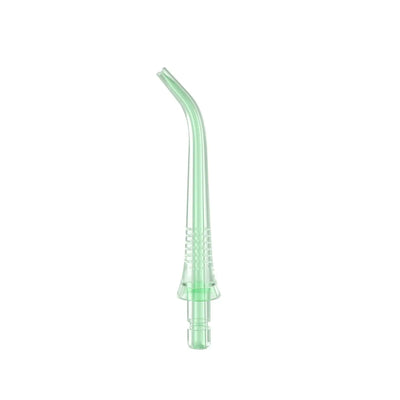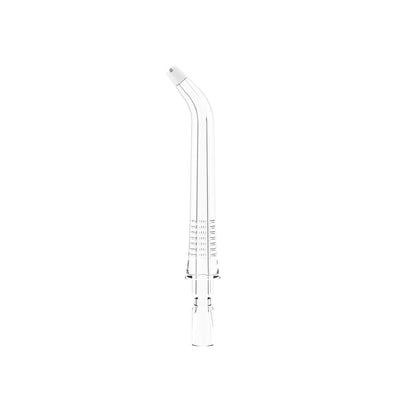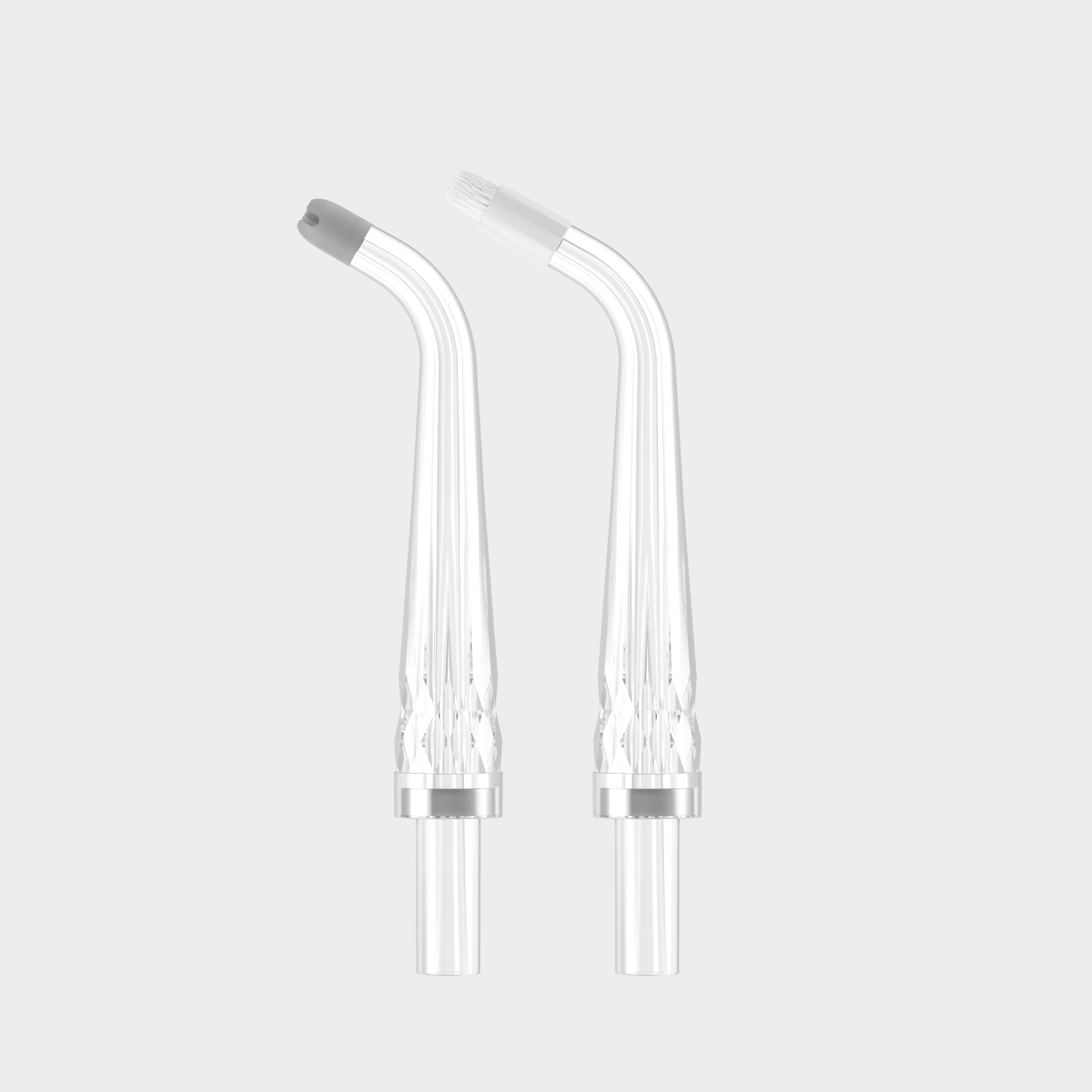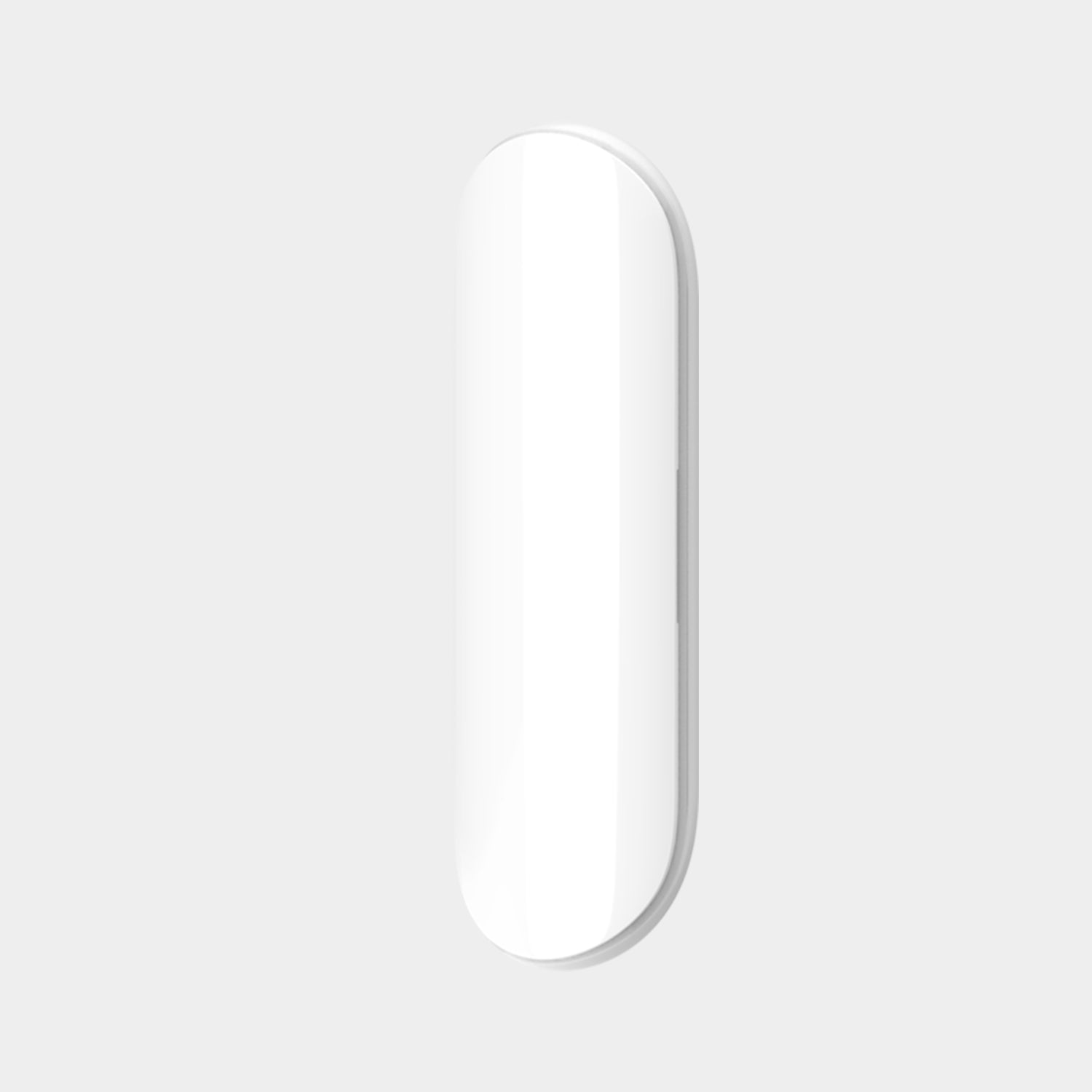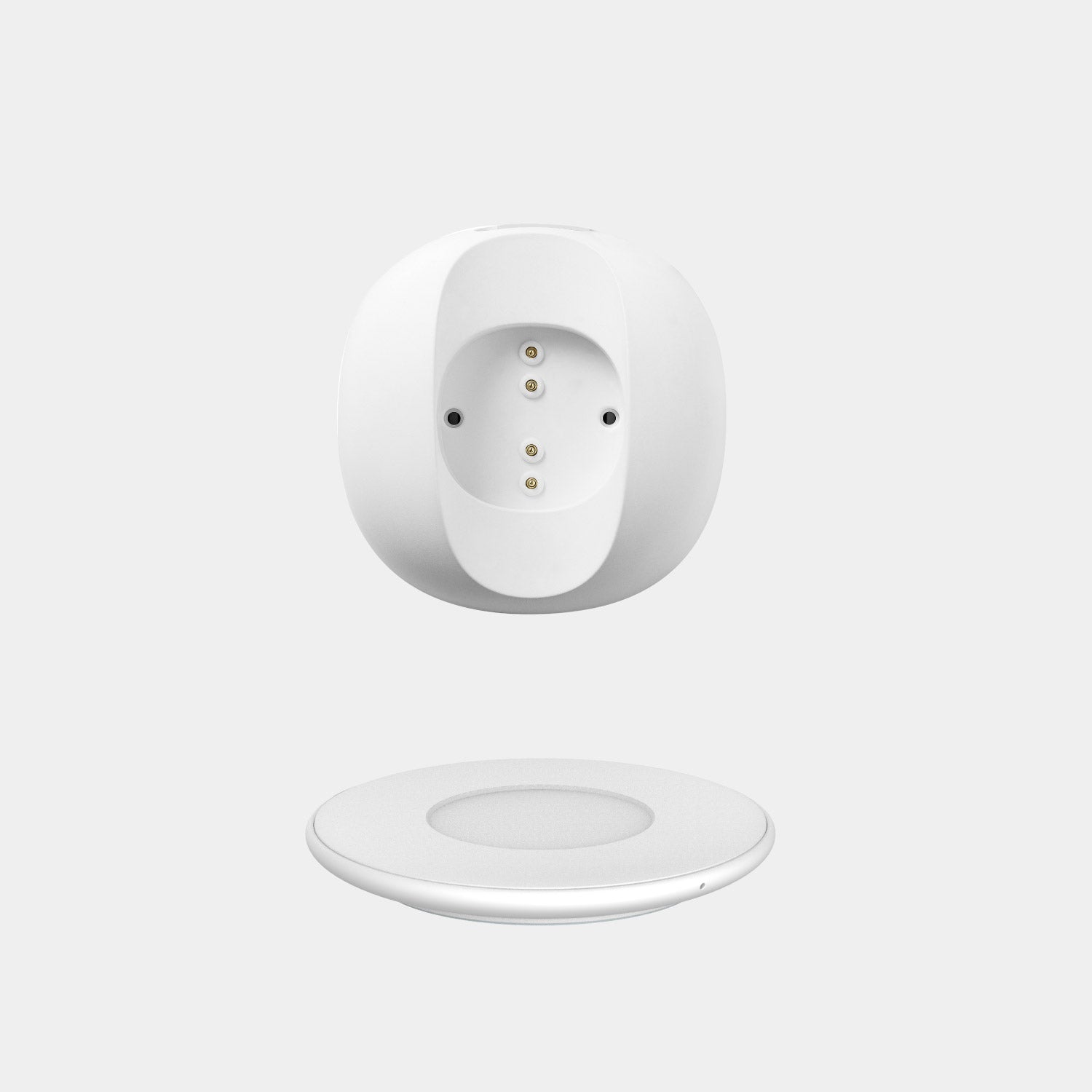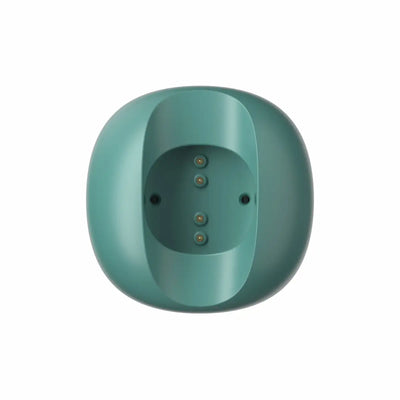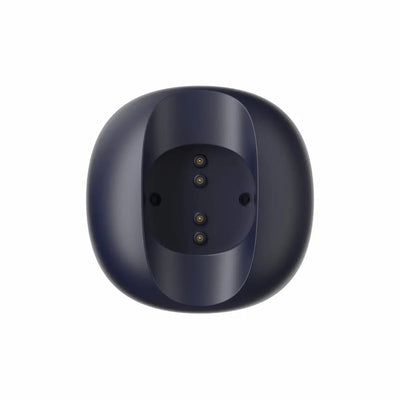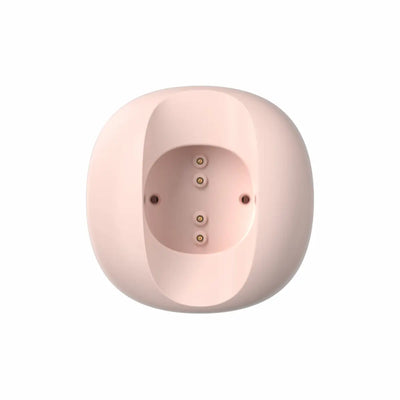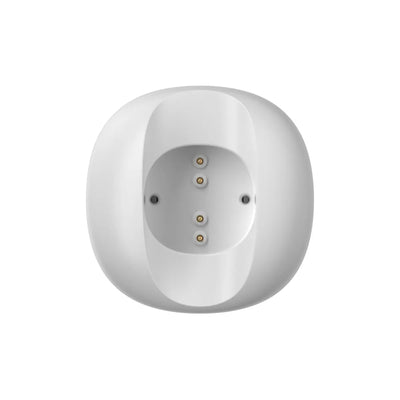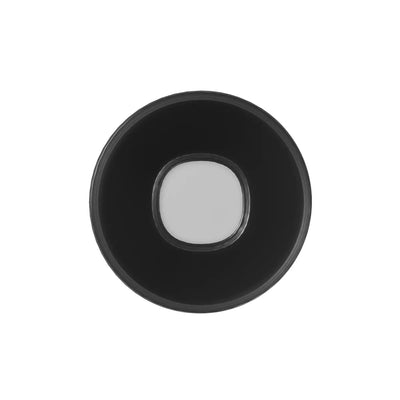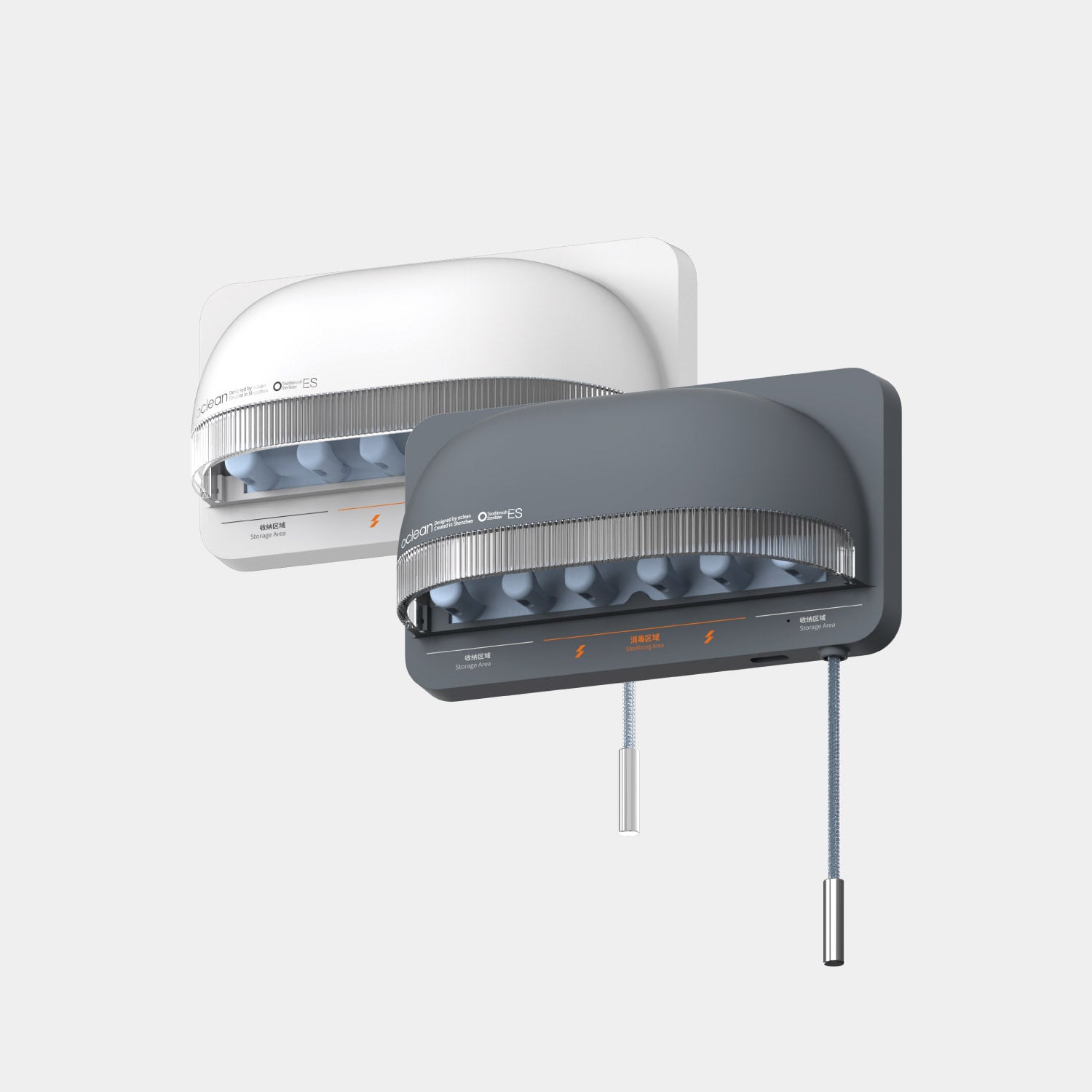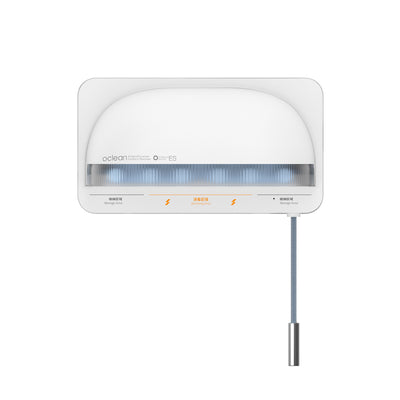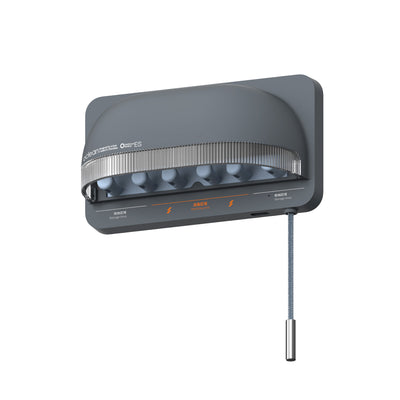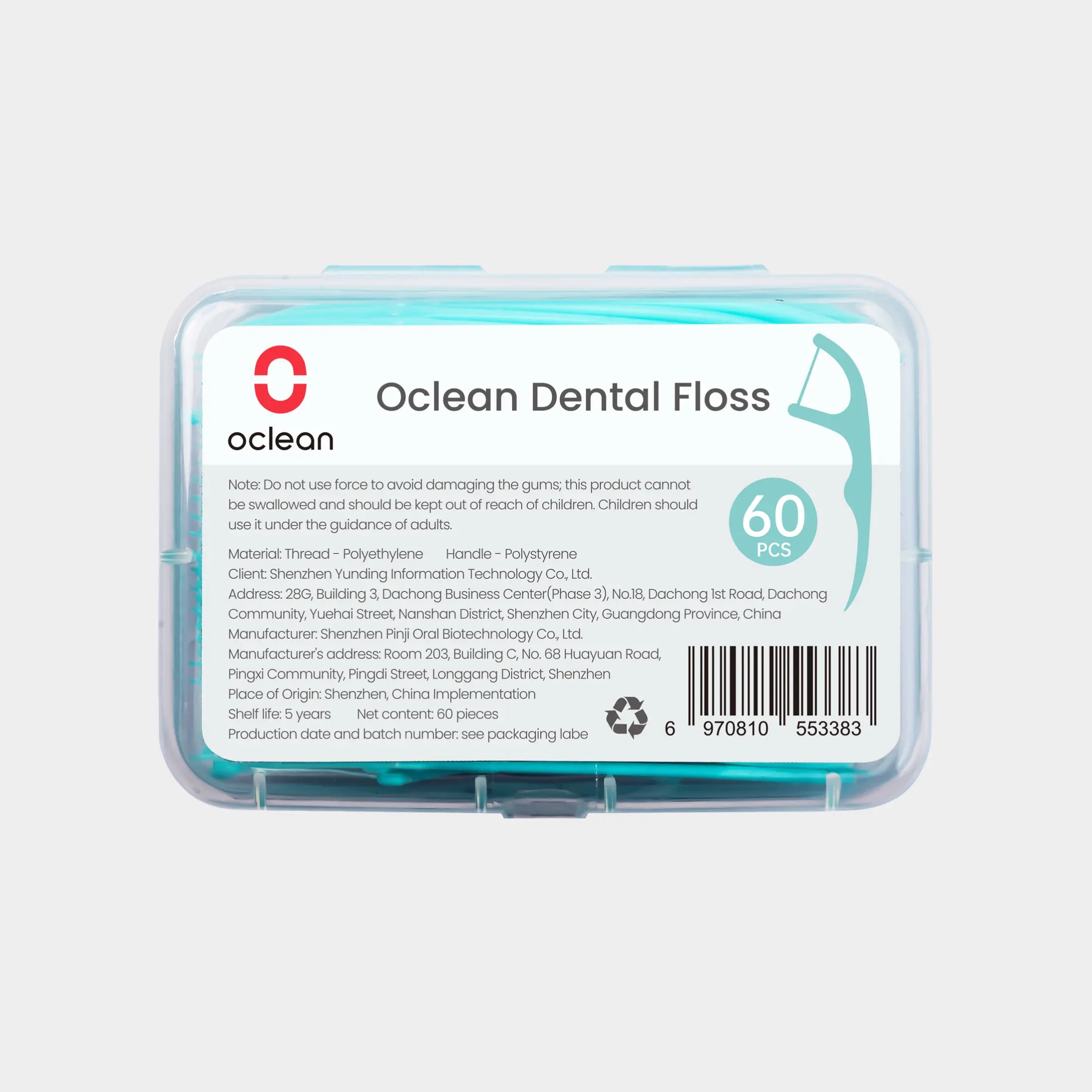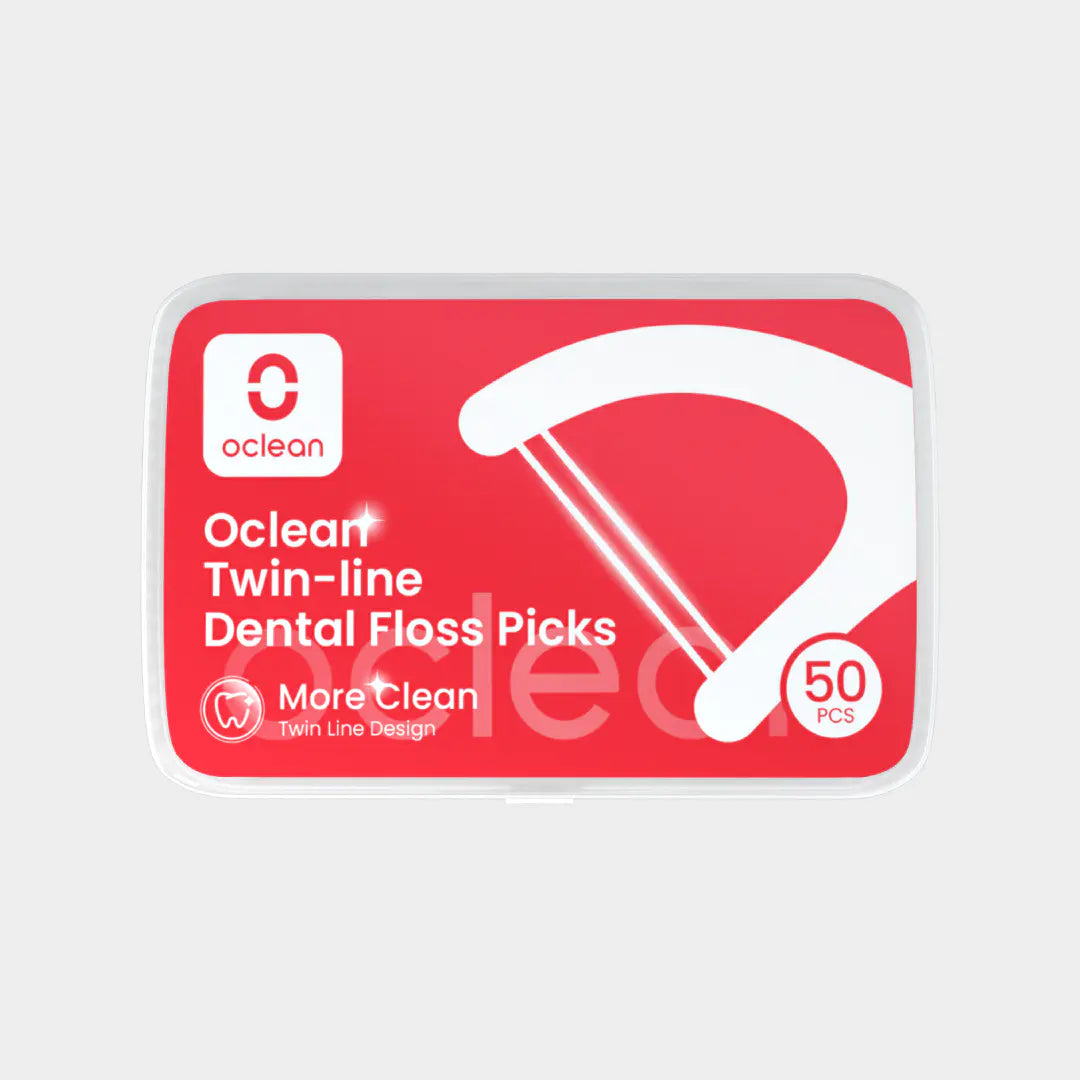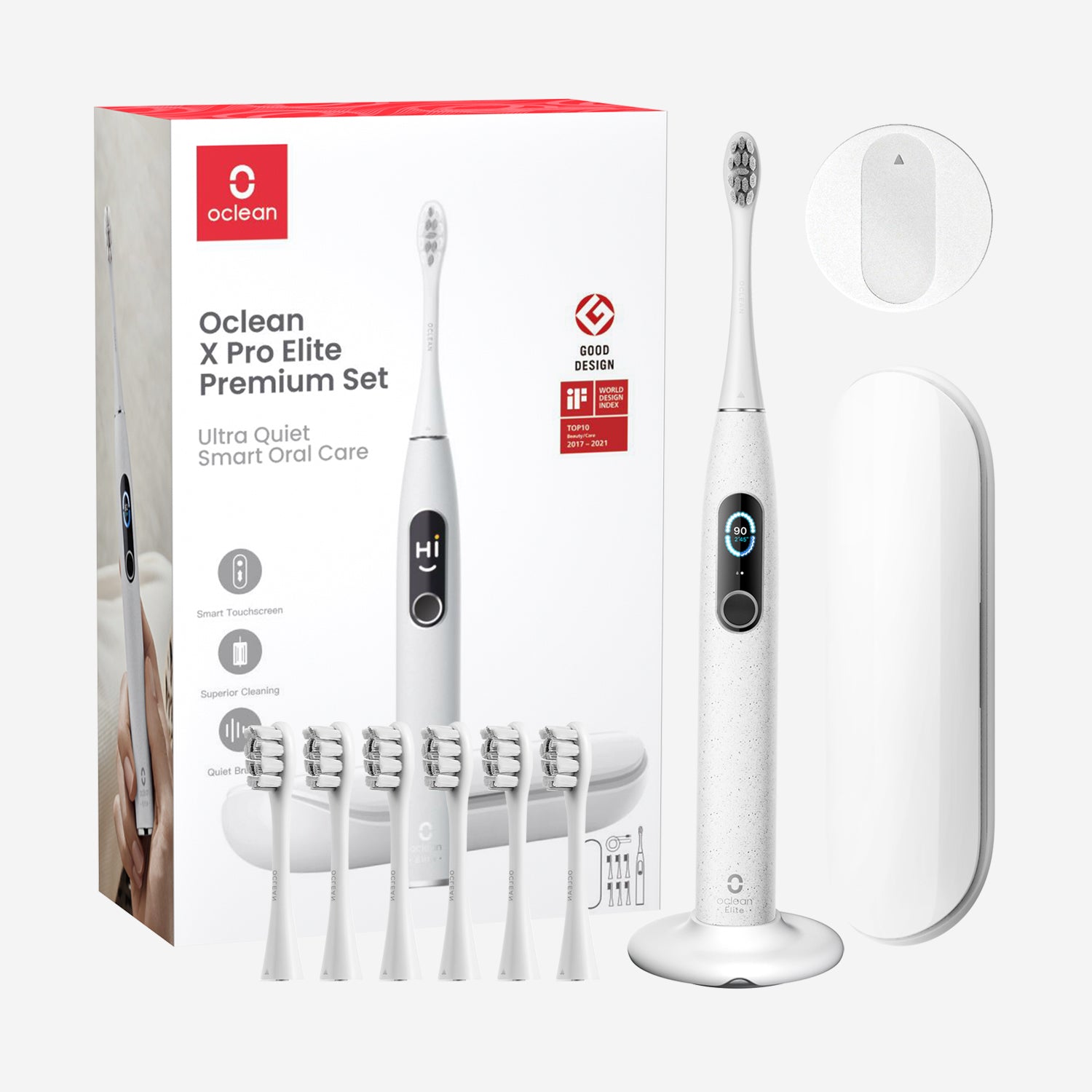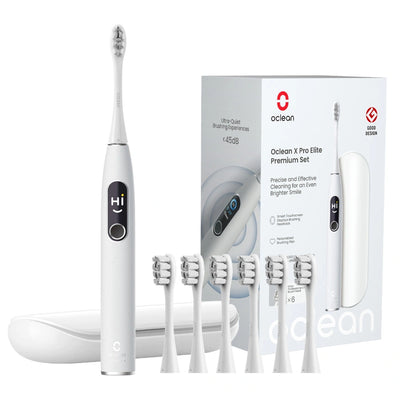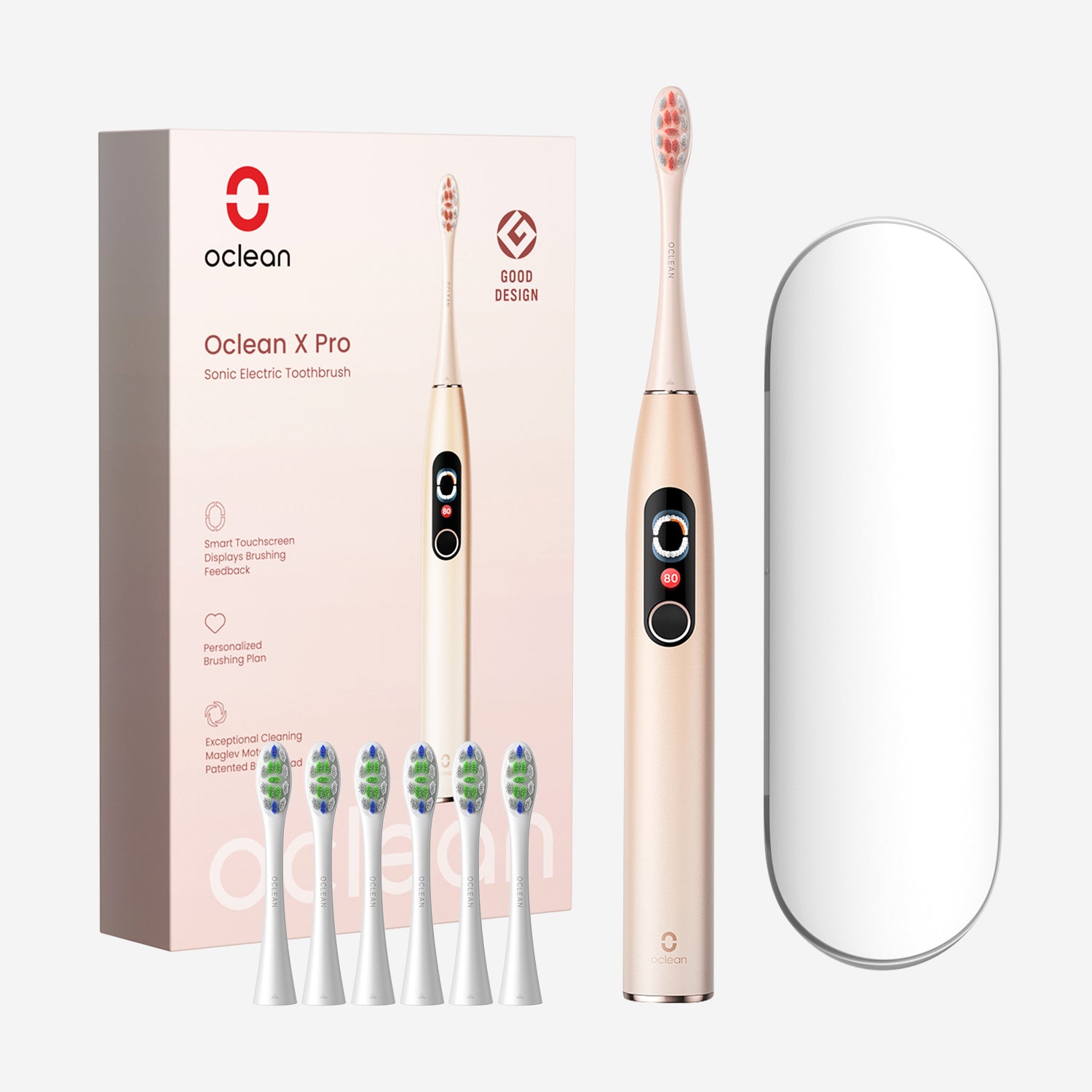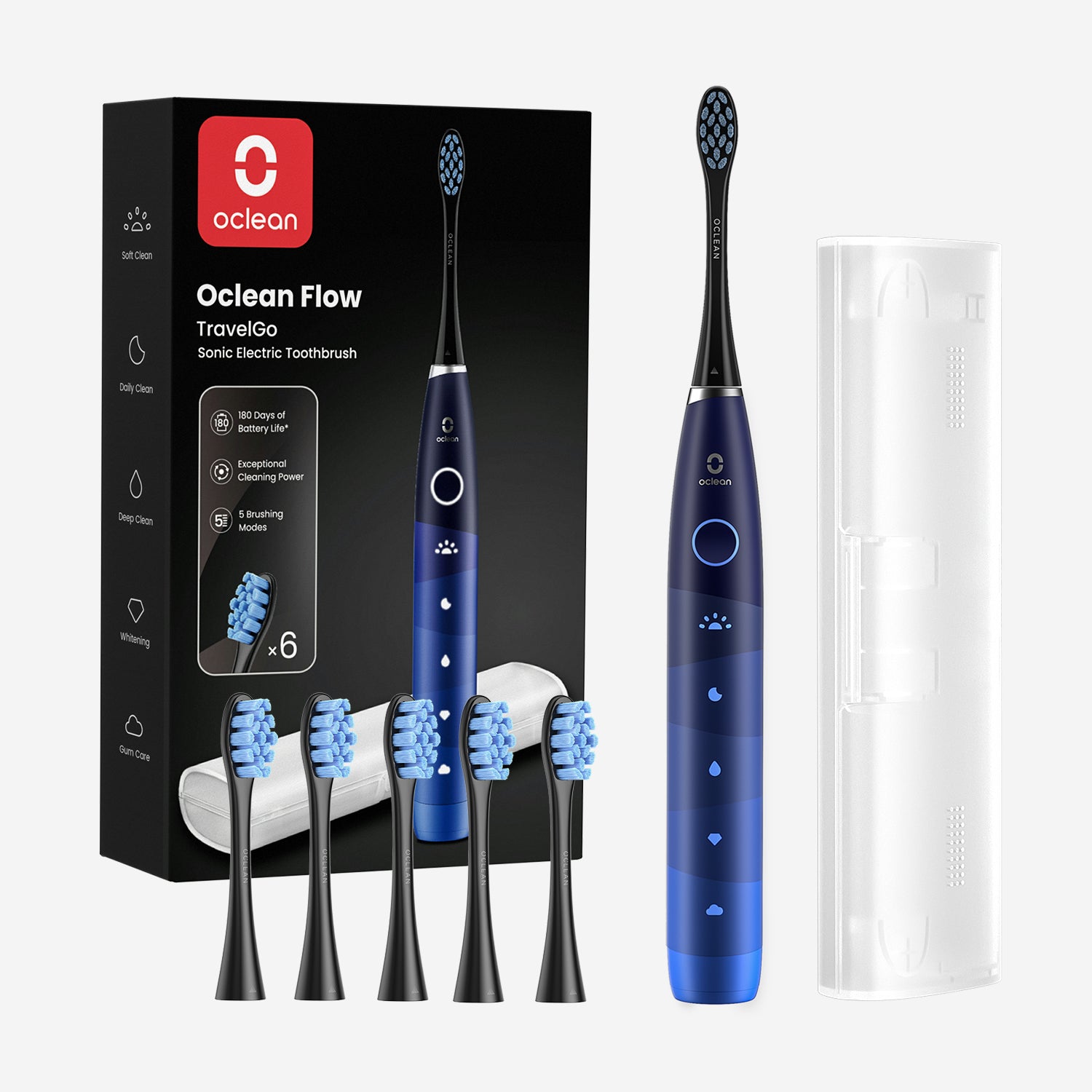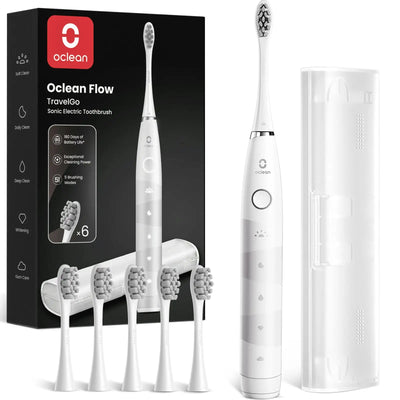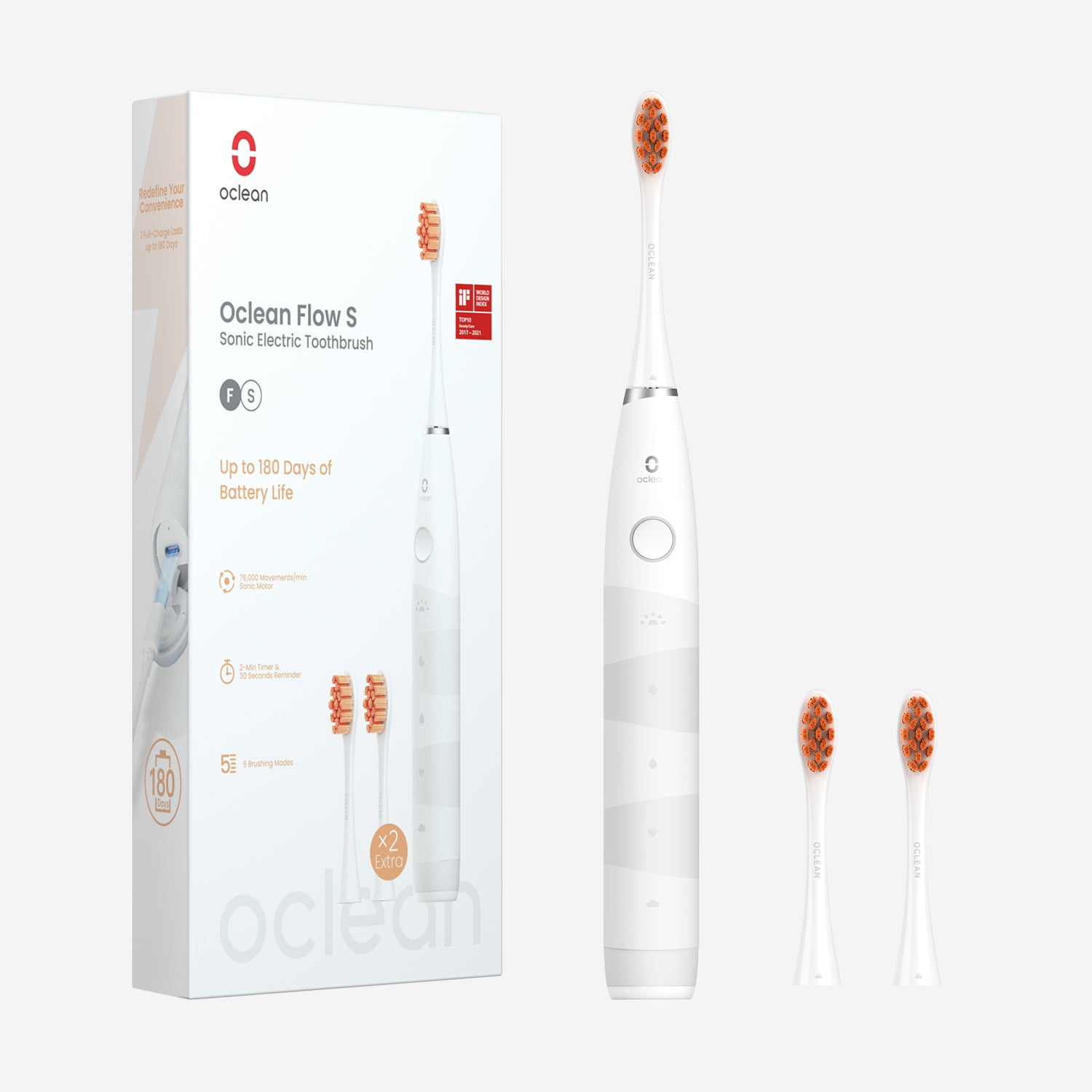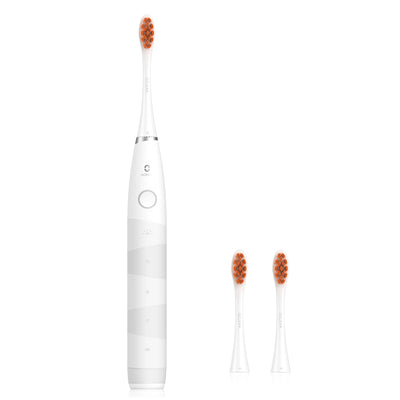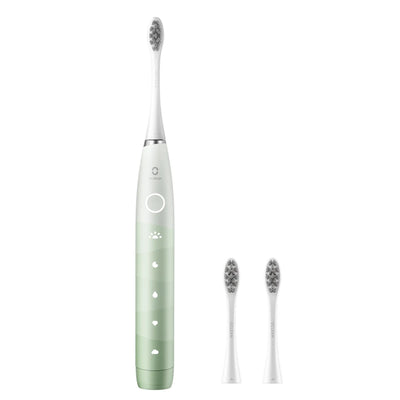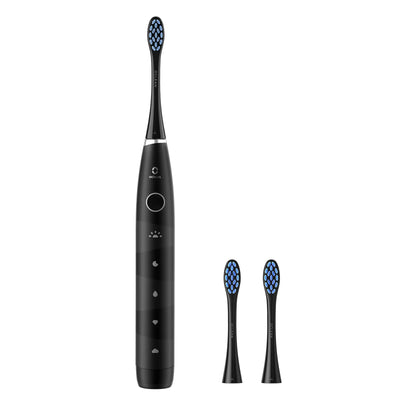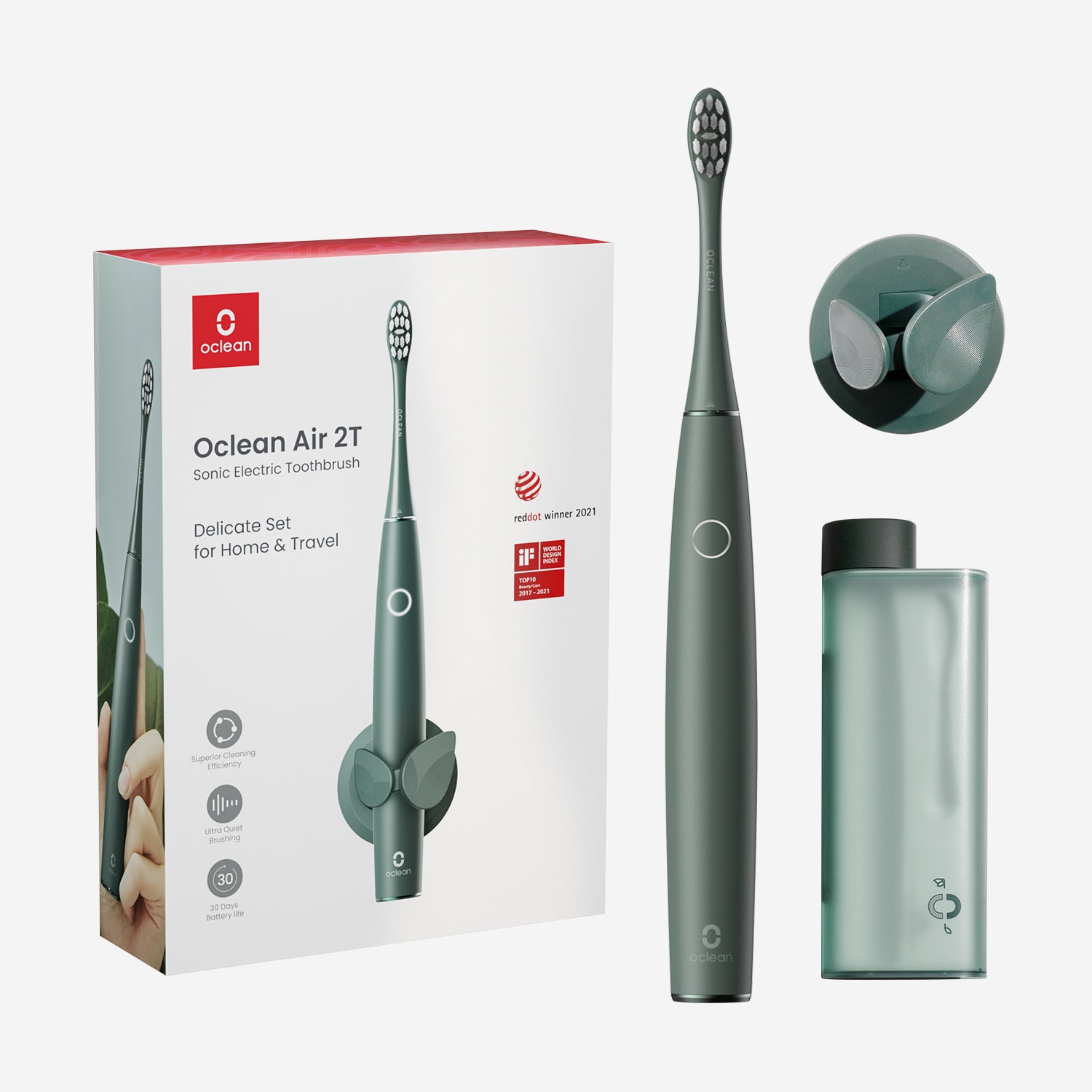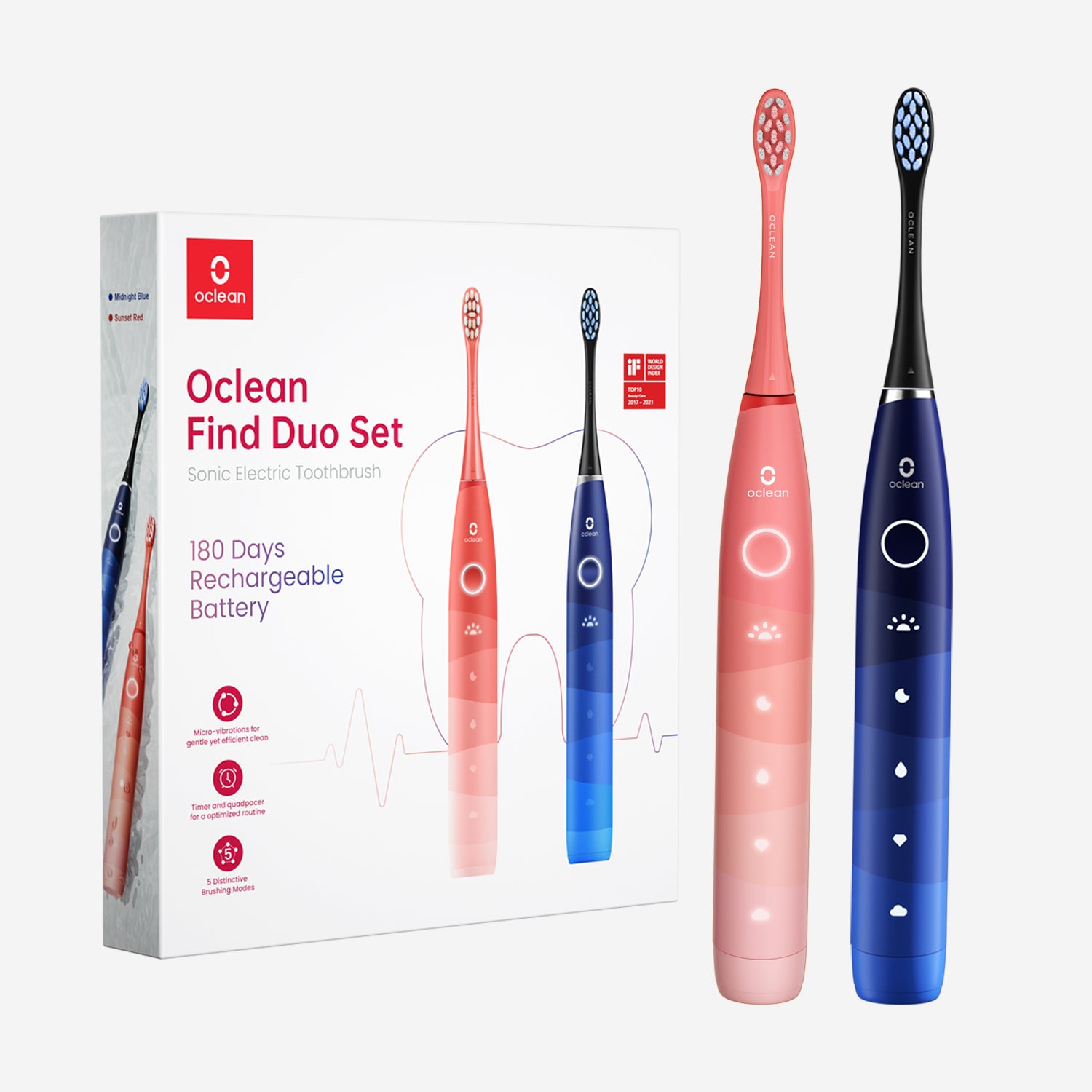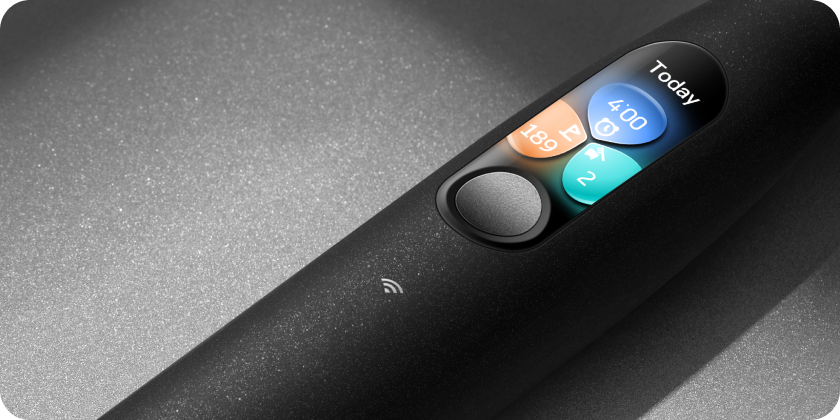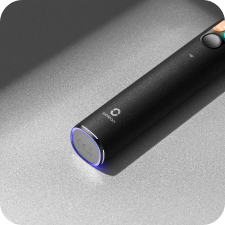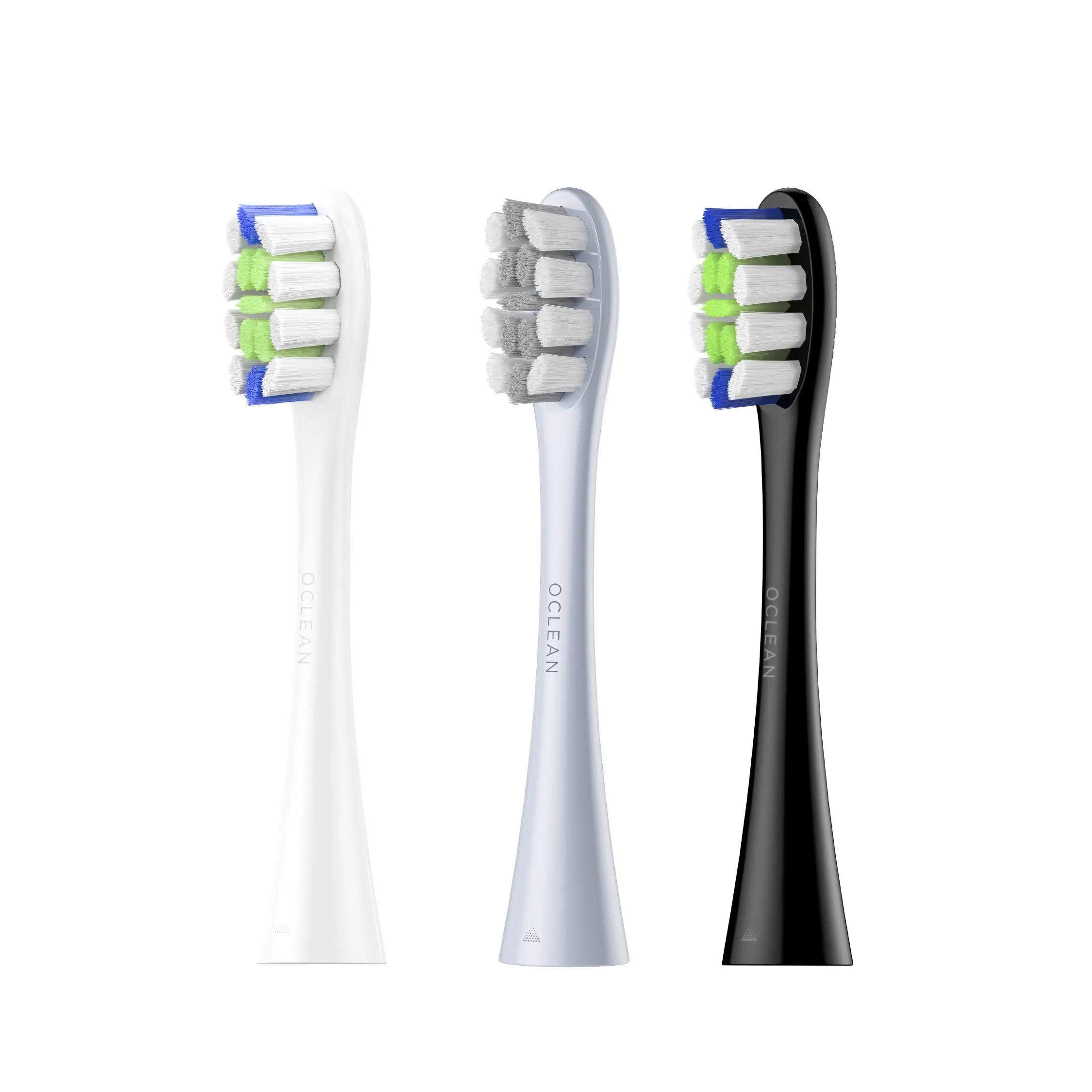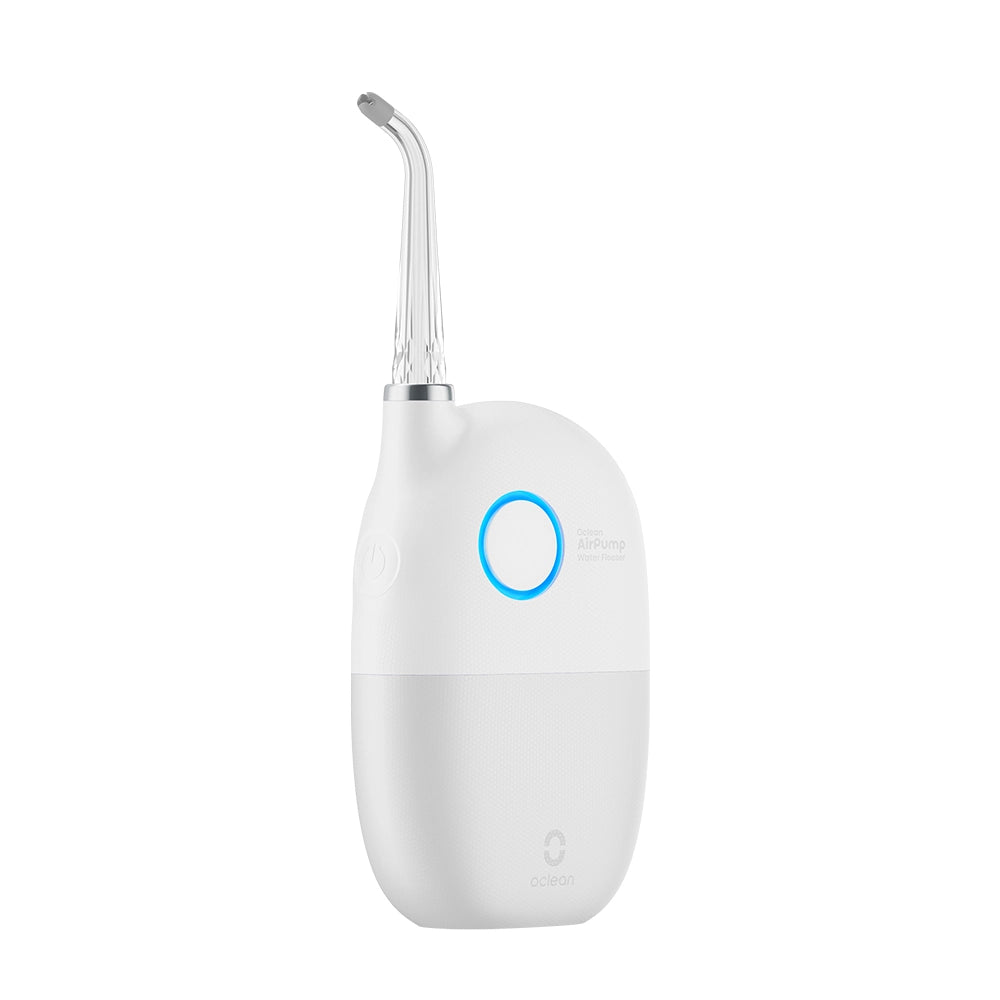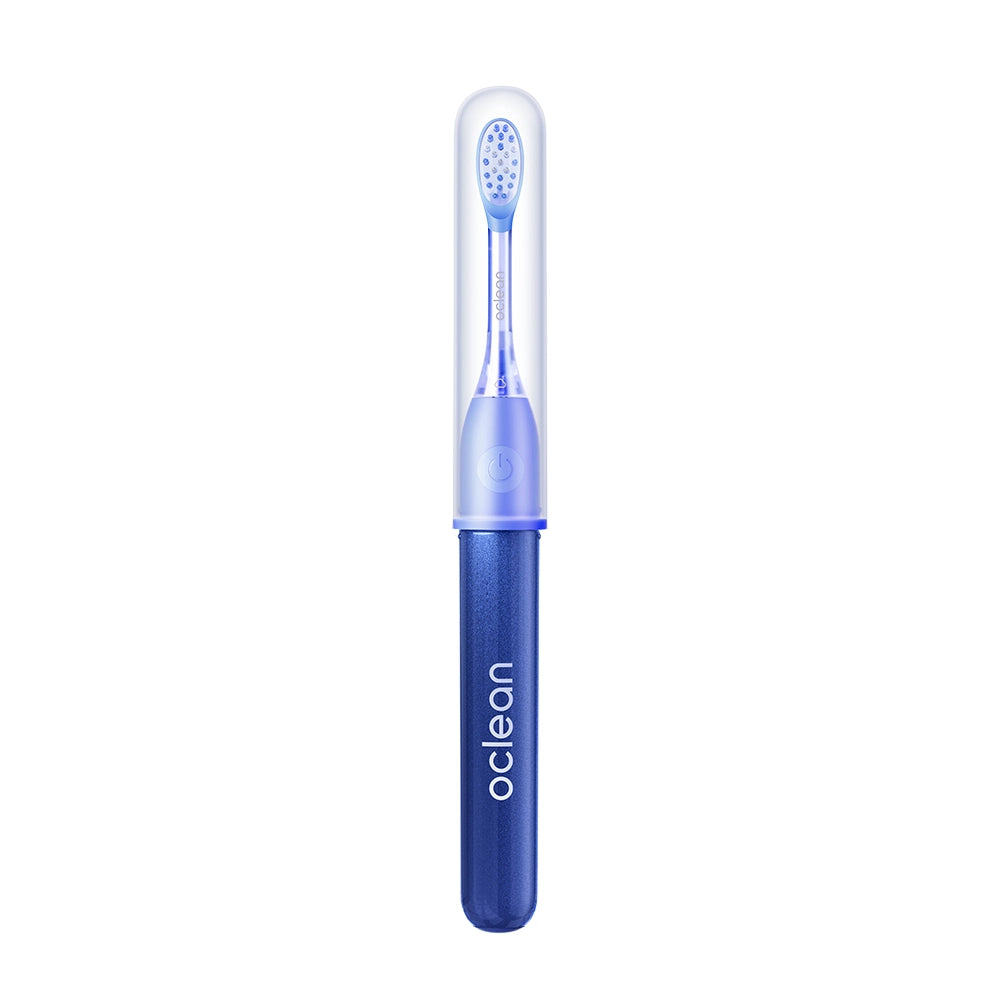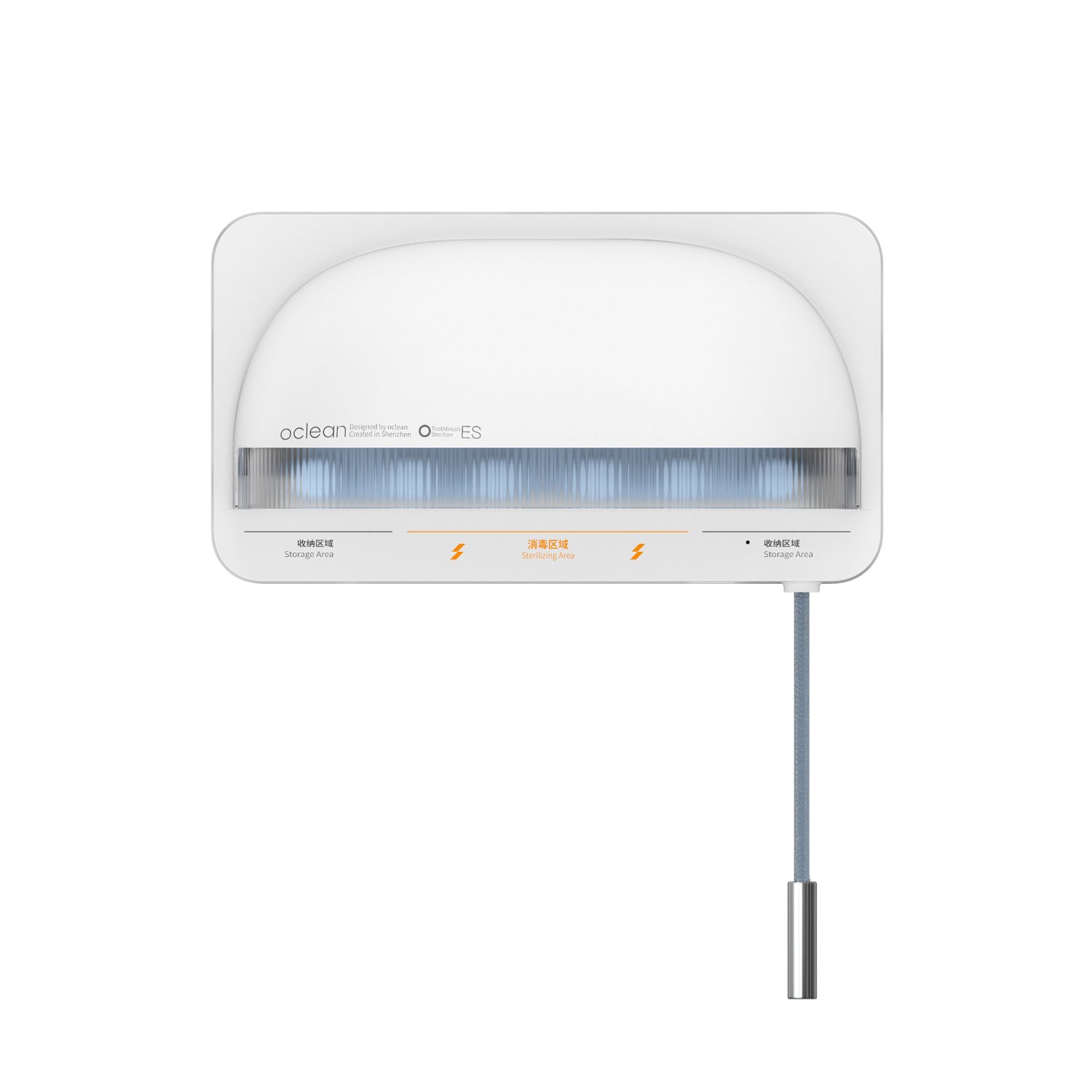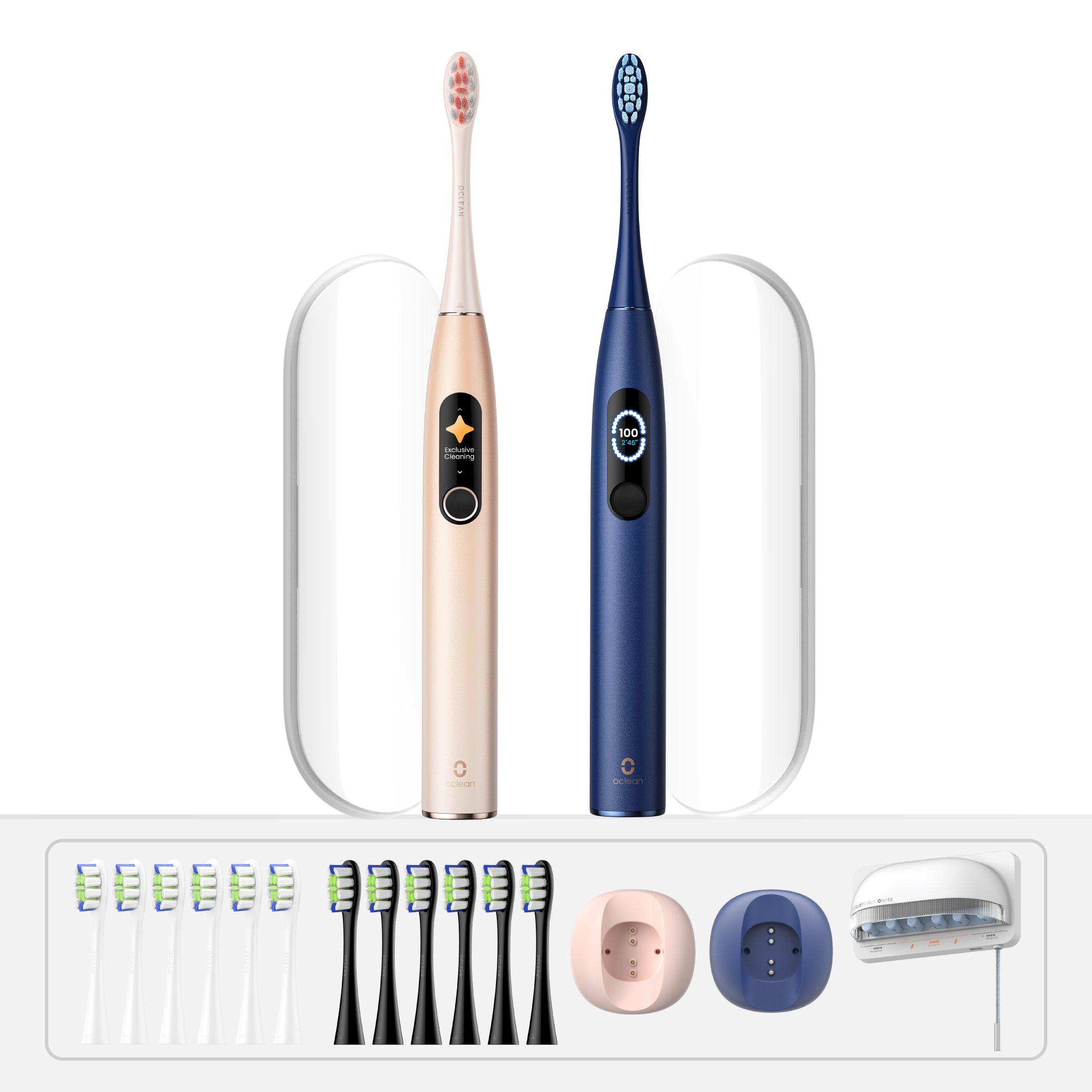Merker du at tennene dine ser litt «lengre» ut enn før? Opplever du en stikkende følelse av sensitivitet når du tar en slurk av en iskald drikke? Da kan det hende du har tannkjøtttilbaketrekning, et vanlig, men ofte oversett problem innen munnhygiene.
Ifølge CDC har mer enn 42 % av voksne på 30 år og oppover en eller annen form for tannkjøttsykdom, mens nesten 8 % sliter med den mest alvorlige formen. [1] Men tilbaketrukne tannkjøtt kan behandles, og i de fleste tilfeller forbedres, spesielt med riktig pleie, verktøy og vaner.
Hva er egentlig tannkjøttresesjon?
Tannkjøttresesjon er når tannkjøttlinjen gradvis trekker seg tilbake fra tannen, og avslører mer av rotflaten. Siden rotens dentin er mykere og gulere enn emaljen, er resesjon vanligvis både kosmetisk og funksjonell. [2]
Tilbaketrukne tannkjøtt kan oppstå på én enkelt tann eller på flere tenner. Det kan være mildt i starten, men hvis det blir ignorert, vil det forverres over tid og kan føre til alvorlige problemer som:
- Tannfølsomhet
- Økt risiko for karies
- Opphopning av plakk under tannkjøttkanten
- Tap av bein og til slutt løshet i tennene
Hva er symptomene på tilbaketrukne tannkjøtt?
Et av de enkleste tegnene å legge merke til er når tennene dine begynner å se lengre ut enn de pleide å være. Det er som regel et tegn på at tannkjøttet trekker seg tilbake. Men det finnes også andre varselsignaler du bør være oppmerksom på, blant annet:
- Følsomhet for varme, kalde eller søte matvarer og drikkevarer
- Smerte eller ømhet langs tannkjøttkanten
- Ubehag ved børsting eller bruk av tanntråd
- Skarpe støt under profesjonelle rengjøringer
- Synlige mellomrom eller mørkere flekker rundt roten av tennene dine (eksponerte røtter)
Hvis noen av disse høres kjent ut, er det verdt å få det sjekket. Jo tidligere tannkjøtttilbaketrekning behandles, desto enklere er det å forhindre videre utvikling.
Hvorfor trekker tannkjøttet seg tilbake?
Det finnes mange grunner til at tannkjøttet ditt kan trekke seg tilbake over tid. La oss ta en rask oversikt:
|
Årsak |
Hvordan det bidrar |
|
Aggressiv børsting |
Gni tannkjøttet bort, spesielt med børster med harde børster. [3] |
|
Periodontitt (tannkjøttsykdom) |
Bakterielle toksiner løser opp bindevev og bein. |
|
Genetikk og tynt vev |
Noen har naturlig et skjør, minimalt tannkjøttbånd. |
|
Tanngnissing (bruksisme) |
Overdreven bittkraft bøyer tennene og svekker feste av tannkjøttet. |
|
Feilstilling eller trange tenner |
Feiljusterte tenner presser eller trekker i nærliggende tannkjøtt. |
|
Tobakksbruk og vaping |
Redusere blodstrømmen, bremse helingsprosessen og øke betennelsen. |
|
Orale piercinger |
Konstant gnissing fra smykker irriterer tannkjøttet. |
|
Hormonelle eller systemiske tilstander |
Diabetes, graviditet eller autoimmune sykdommer kan tynne ut tannkjøttet. |
Hvordan naturlig reversere tilbaketrukne tannkjøtt
La oss være ærlige—når tannkjøttet begynner å trekke seg tilbake, vil det ikke vokse tilbake av seg selv. Tannkjøttvev er ikke som hud. Men du kan stoppe det i tide og, i noen tilfeller, forbedre tannkjøtthelsen naturlig.
Her er noen milde, naturlige hjemmeremedier for å ta vare på tannkjøttet ditt:
1. Bytt til en tannbørste med myke børstehår
Harde børstehår og aggressiv pussing vil forverre tilbaketrekningen. Børst forsiktig med en tannbørste med myke børstehår (eller enda bedre, en sonic tannbørste som Oclean) og lette, sirkulære bevegelser, ingen skrubbing nødvendig.
2. Børst forsiktig med en naturlig tannkrem
Noen tannkremingredienser (som SLS eller slipende blekemidler) kan irritere sensitive tannkjøtt. Prøv å bruke en naturlig eller fluortannkrem med milde ingredienser som aloe vera, myrra eller tea tree-olje.
3. Skylling med saltvann
Saltvann er en av de eldste kjerringrådene, og det er ikke uten grunn. Det reduserer hevelse, dreper bakterier og beroliger betente tannkjøtt. Bland bare en halv teskje salt med varmt vann, skyll munnen i 30 sekunder, og spytt ut.
4. Prøv olje-trekking
Oil pulling er en gammel ayurvedisk metode hvor du skyller munnen med olje (kokos- eller sesamolje) i 10–20 minutter. Det sies å redusere plakk, opprettholde sunne tannkjøtt og naturlig friske opp pusten. [4]
5. Aloe vera gel
Aloe er ikke bare for solbrenthet. De betennelsesdempende og antibakterielle stoffene i aloe kan berolige røde, betente tannkjøtt. Noen bruker litt aloegel på tannkjøttet etter pussing, bare sørg for at den er ren og av matvarekvalitet.
6. Grønn te eller urtete
Grønn te inneholder antioksidanter som reduserer betennelse. Regelmessig inntak av grønn te kan ha positive effekter på tannkjøttets helse på lang sikt. Du kan også gurgle med avkjølte urteteer som kamille eller salvie for samme formål.
7. Masser tannkjøttet ditt
Akkurat som en muskel trenger også tannkjøttet ditt litt sirkulasjon. Masser forsiktig tannkjøttet med en ren finger eller en myk tannbørste for å øke blodtilførselen og opprettholde sunnere vev.
Hvordan fikse tilbaketrukne tannkjøtt
Å behandle tilbaketrukne tannkjøtt avhenger helt av hvor alvorlig problemet er, og hvordan det oppsto i utgangspunktet. Det finnes flere måter å behandle det på, alt fra enkle reparasjoner til mer omfattende tannbehandling.
La oss sette i gang.
Ikke-kirurgiske løsninger (best for mild tannkjøttresesjon)
Hvis tannkjøttet ditt har trukket seg tilbake, men det ikke er for alvorlig og fortsatt i de tidlige stadiene, vil tannlegen din sannsynligvis anbefale ikke-kirurgiske behandlinger som:
1. Grundig Rens (Fjerning av tannstein og rotplaning)
Se på dette som en "reset" for tannkjøttet ditt. Tannlegen fjerner bakterier og plakkoppbygging under tannkjøttkanten som tannpussen ikke når. Dette hjelper tannkjøttet ditt med å gro og feste seg igjen til tennene. [5]
2. Topiske antibiotika
Hvis tilbaketrekning skyldes tannkjøttsykdom, vil tannlegen din legge en unik antibiotikagel under tannkjøttet. Dette bidrar til å bekjempe infeksjon og fremme heling.
tannfarget resin brukes til å dekke den eksponerte roten, som ikke bare beskytter området, men også gir det et mer naturlig utseende. Det er en midlertidig løsning som forbedrer både komfort og utseende.
3. Ortodontisk behandling
Når tennene dine overlapper eller er skjeve, legger de press på tannkjøttet og får det til å trekke seg tilbake. Tannregulering eller alignere kan flytte tennene til sunnere posisjoner, noe som ser ut til å la tannkjøttlinjen komme seg naturlig.
Kirurgiske behandlinger (for moderat til alvorlig tilbaketrekning)
Hvis tannkjøttet har trukket seg mye tilbake eller det er skadet mye av underliggende bein, kan kirurgi være nødvendig:
1. Tanngumminnleggelse kirurgi
Frisk vev (vanligvis hentet fra toppen av munnen din) transplanteres til det problematiske området. Det dekker den sårbare roten, beskytter tannen din og forbedrer utseendet på smilet ditt.
Det finnes ulike transplantasjonsmetoder, og din tannkjøttspesialist vil velge den mest passende for din situasjon. De fleste av disse prosedyrene er nå minimalt invasive og leges raskt med riktig pleie.
2. Rengjøring av åpne klaffer
Det er gullstandarden for prosedyren. Hvis det har utviklet seg dype lommer rundt tennene og tannkjøttet, kan tannlegen løfte opp tannkjøttvevet for å fjerne plakk og bakterier under, og deretter sy det tett tilbake. Dette gjør lommene mindre og får tannkjøttet til å sitte tettere rundt tennene. [6]
3. Regenereringsterapi
Når tannkjøttsykdom har ødelagt beinet, kan et unikt regenererende materiale (som en membran eller proteingel) settes inn i det berørte området for å stimulere kroppen din til å naturlig gjenoppbygge bein og vev.
4. Vevstransplantasjon
For mer alvorlige tilfeller er en bløtvevstransplantasjon vanligvis den beste løsningen. Den erstatter manglende tannkjøtt og dekker tannrøttene dine, noe som eliminerer følsomhet og forhindrer ytterligere skade.
Kan tilbaketrukne tannkjøtt fullstendig reverseres?
Dessverre, når tannkjøttet ditt har trukket seg tilbake, kan det ikke vokse tilbake av seg selv. Tannkjøttvev regenereres ikke på samme måte som hud. Derfor er det så viktig å oppdage det tidlig og behandle det raskt. Selv om du ikke kan reversere tannkjøtttilbaketrekning helt, kan du forhindre at det forverres, og i mange tilfeller kan du gjenopprette tannkjøttlinjen ved hjelp av tannbehandlinger.
Hvordan forhindre tilbaketrekking av tannkjøttet
Her er noen enkle, men effektive tips for å unngå tilbaketrukket tannkjøtt:
Børst forsiktig, to ganger daglig: Bruk en tannbørste med myke børstehår, for eksempel the Oclean x lite Smart sonic tannbørste og ikke puss for hardt. Å pusse for hardt kan faktisk skade tannkjøttet ditt på sikt.
- Bruk tanntråd daglig: Den fjerner plakk fra steder tannbørsten din ikke når. Dette hindrer bakterier i å samle seg langs tannkjøttkanten.
- Skyll med en munnskyll som har antimikrobielle egenskaper: Norwegian Det hjelper med å redusere bakterier som kan føre til tannkjøttsykdom.
- Få regelmessige tannrensinger: De fleste har godt av en rens hver sjette måned, men hvis du er i en høyere risikogruppe, kan tannlegen anbefale hyppigere besøk.
- Unngå tobakk: Røyking eller tygging av tobakk svekker tannkjøttet ditt og gjør det mer utsatt for infeksjoner.
- Behandle sliping eller gnissing: Hvis du gnisser tenner om natten, bør du snakke med tannlegen din om en munnbeskytter. For mye press på tennene kan føre til at tannkjøttet trekker seg tilbake.
- Se etter tidlige tegn: Hvis tennene dine begynner å se lengre ut, eller du kjenner følsomhet, ikke overse det. Å oppdage tannkjøttproblemer tidlig gjør en stor forskjell.
Den viktigste konklusjonen
Tilbaketrukne tannkjøtt kan være skremmende, men ikke bekymre deg – med riktig pleie og rask behandling kan du redde smilet ditt og forhindre ytterligere skade. Selv om tannkjøttet ikke vokser tilbake av seg selv, har moderne tannbehandling mange vellykkede metoder for å gjenvinne tannkjøttets helse og selvtillit.
Å være regelmessig med munnhygiene, pusse forsiktig og besøke tannlegen ofte kan gjøre en forskjell. Jo tidligere du tar tak i det, desto enklere er det å håndtere—så ikke ignorer tegnene. Tannkjøttet ditt fortjener også oppmerksomhet!
Referanse
1. «Tannkjøttsykdommer i tall.» NIH MedlinePlus Magasin, 25. jan. 2018, magazine.medlineplus.gov/article/gum-disease-by-the-numbers.
2. Sarhan, Susan, et al. “Forekomst, årsaker og kliniske kjennetegn ved gingival retraksjon hos et utvalg voksne egyptiske tannpasienter: En tverrsnittstudie.” BMC Oral Health, vol. 25, nr. 1, 7. mai 2025, pmc.ncbi.nlm.nih.gov/articles/PMC12060494/, https://doi.org/10.1186/s12903-025-06020-3.
3. Jati, Ana Suzy, et al. «Gingival retraksjon: Årsakene og typene, og viktigheten av ortodontisk behandling.» Dental Press Journal of Orthodontics, vol. 21, nr. 3, juni 2016, s. 18–29, www.ncbi.nlm.nih.gov/pmc/articles/PMC4944726/, https://doi.org/10.1590/2177-6709.21.3.018-029.oin.
4. Christiano, Donna. “Sannheten om tilbaketrukne tannkjøtt.” Healthline, Healthline Media, 14. juni 2023, www.healthline.com/health/receding-gums-grow-back.
5. Imber, Jean-Claude, og Adrian Kasaj. «Behandling av gingival retraksjon: Når og hvordan?» International Dental Journal, vol. 71, nr. 3, juni 2021, s. 178–187, https://doi.org/10.1111/idj.12617.
6. Bellver-Fernandez, R, et al. «Kirurgisk behandling av lokaliserte gingivale retraksjoner ved bruk av koronalt avanserte klaffer med eller uten subepitelialt bindevevstransplantat.» Medisin Oral, Oral Patologi og Munnhulekirurgi, 2016, s. e222–e228, https://doi.org/10.4317/medoral.21043. Tilgjengelig 24. mars 2019.
Table of Contents
